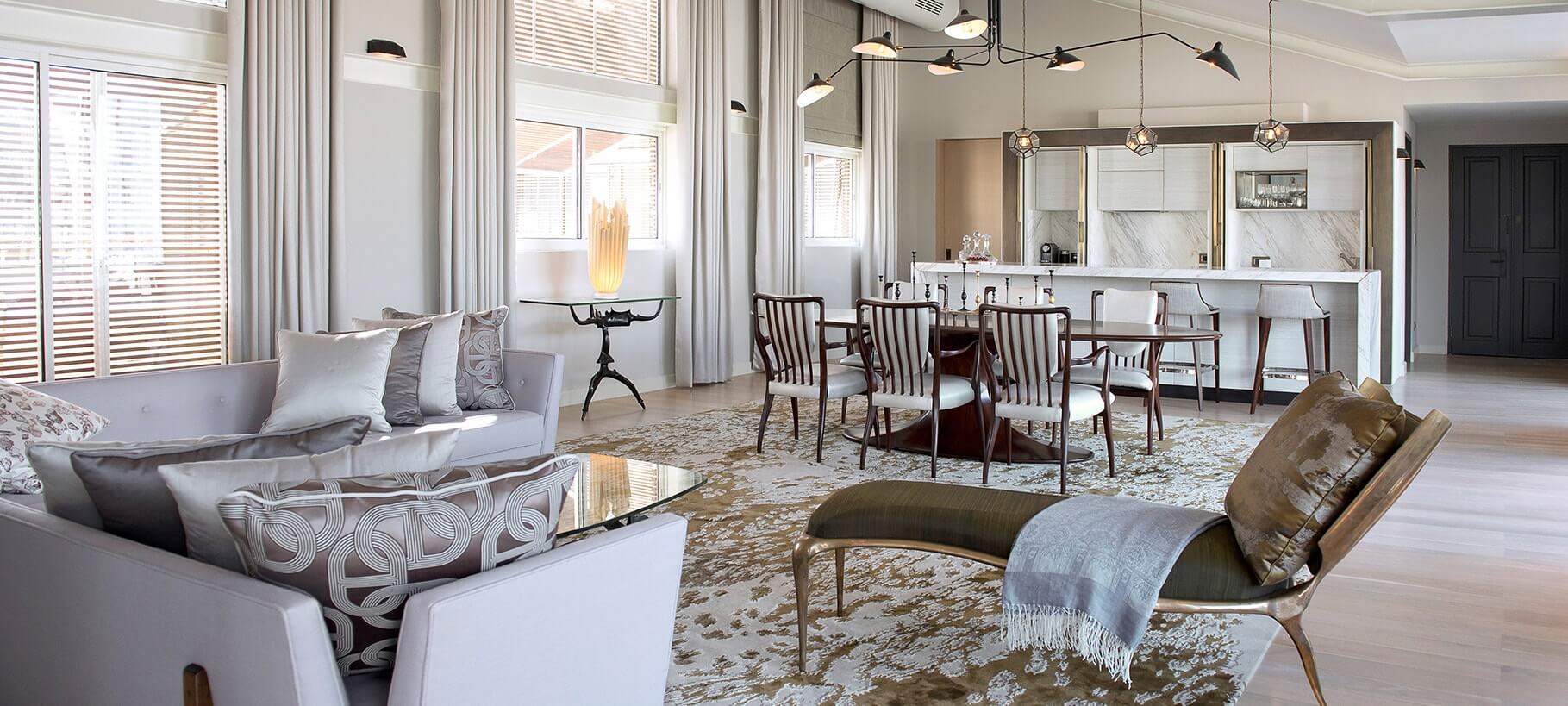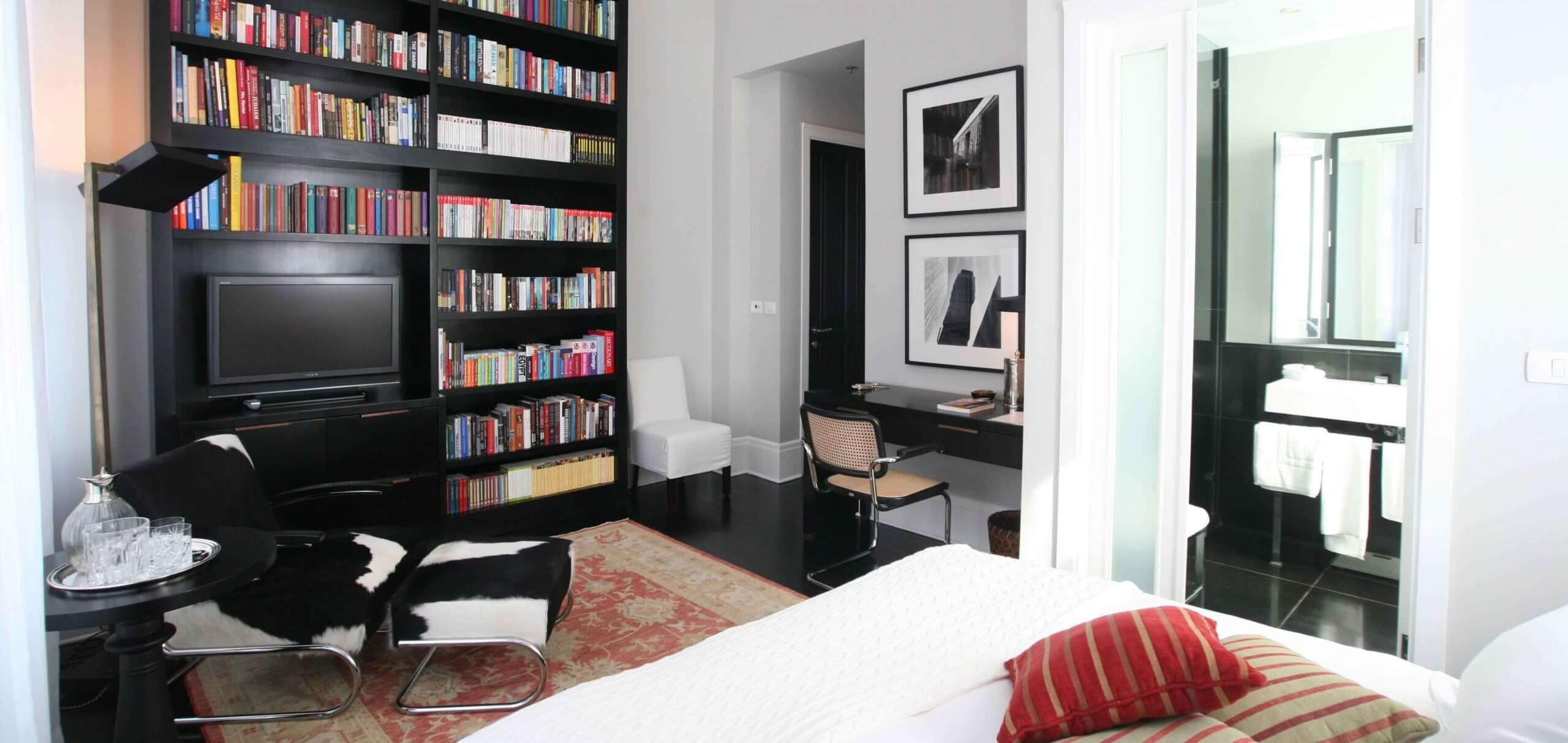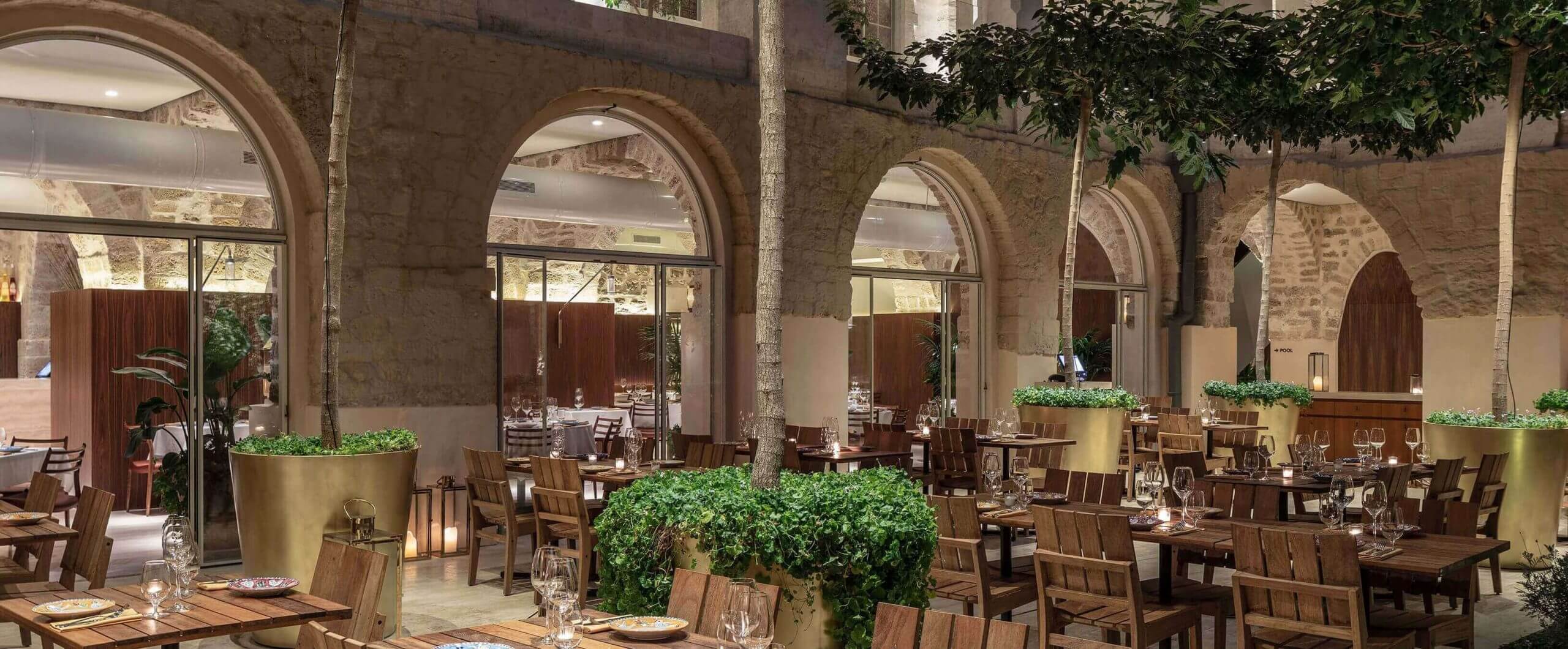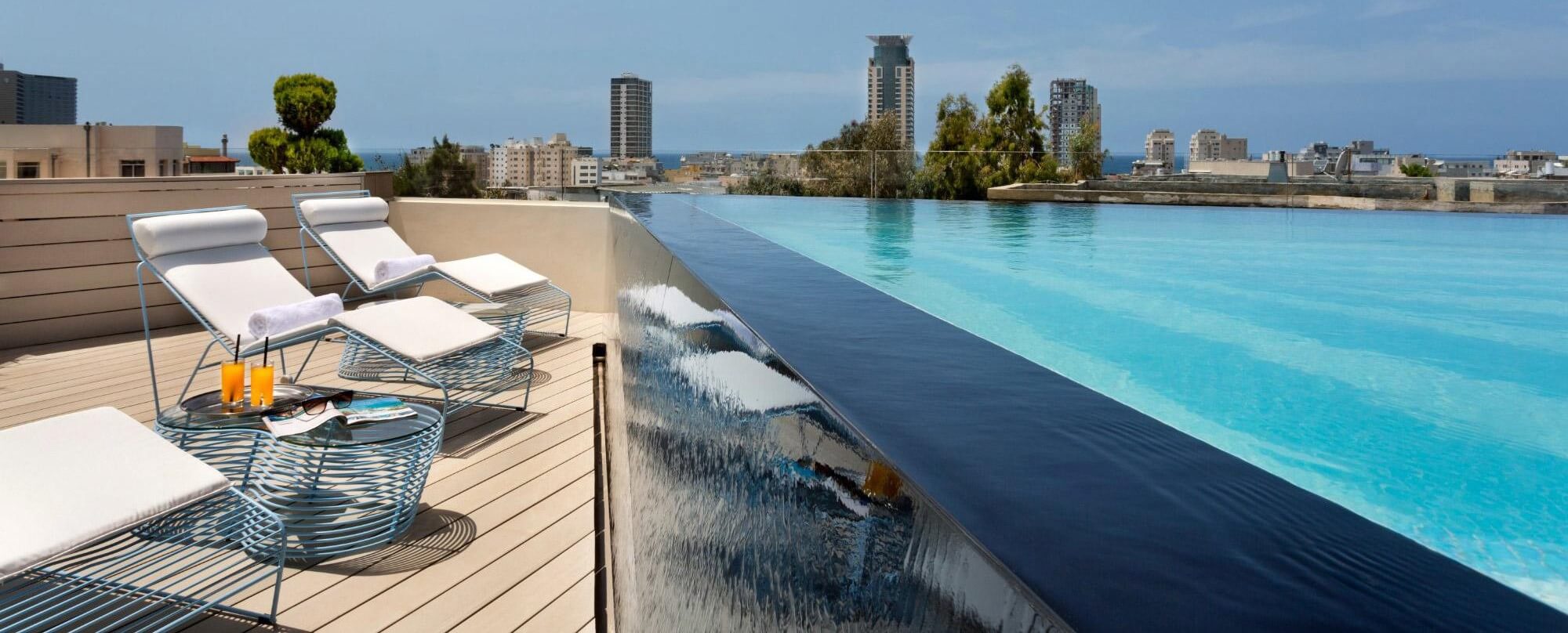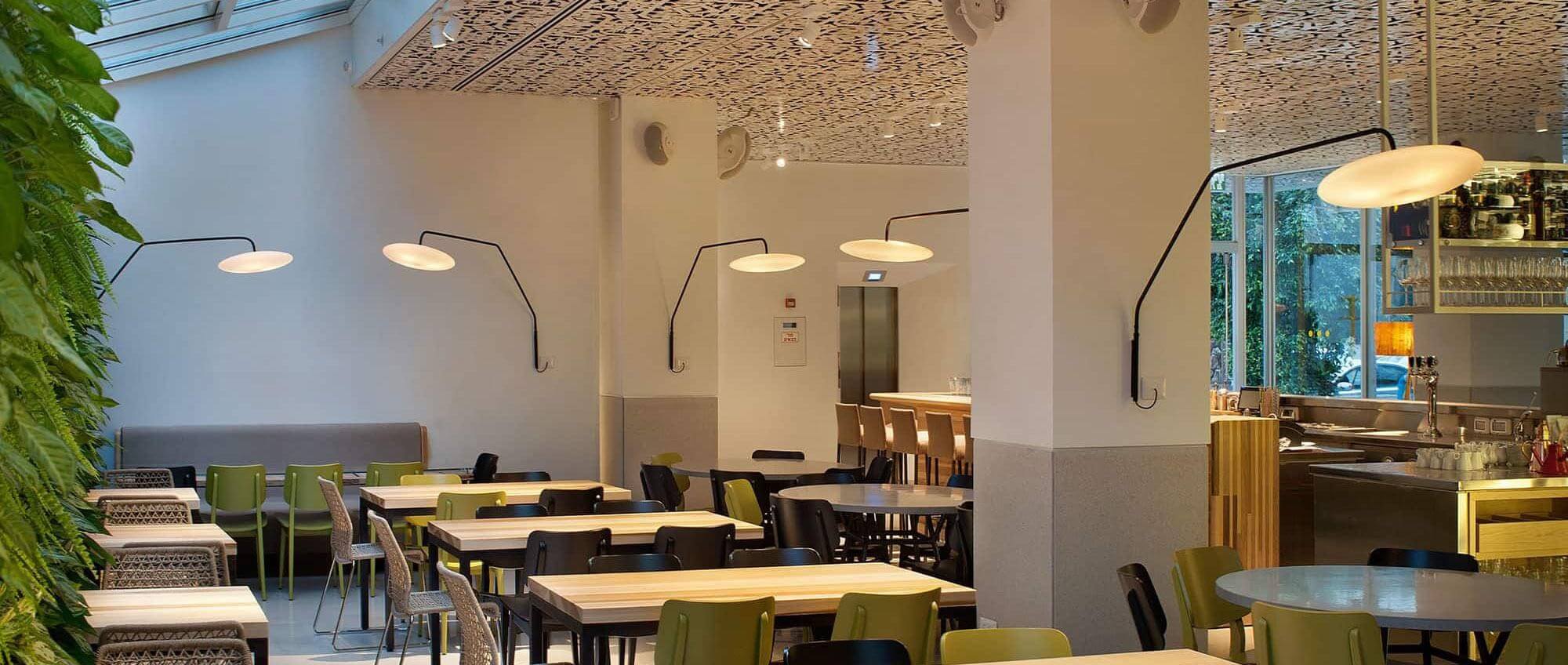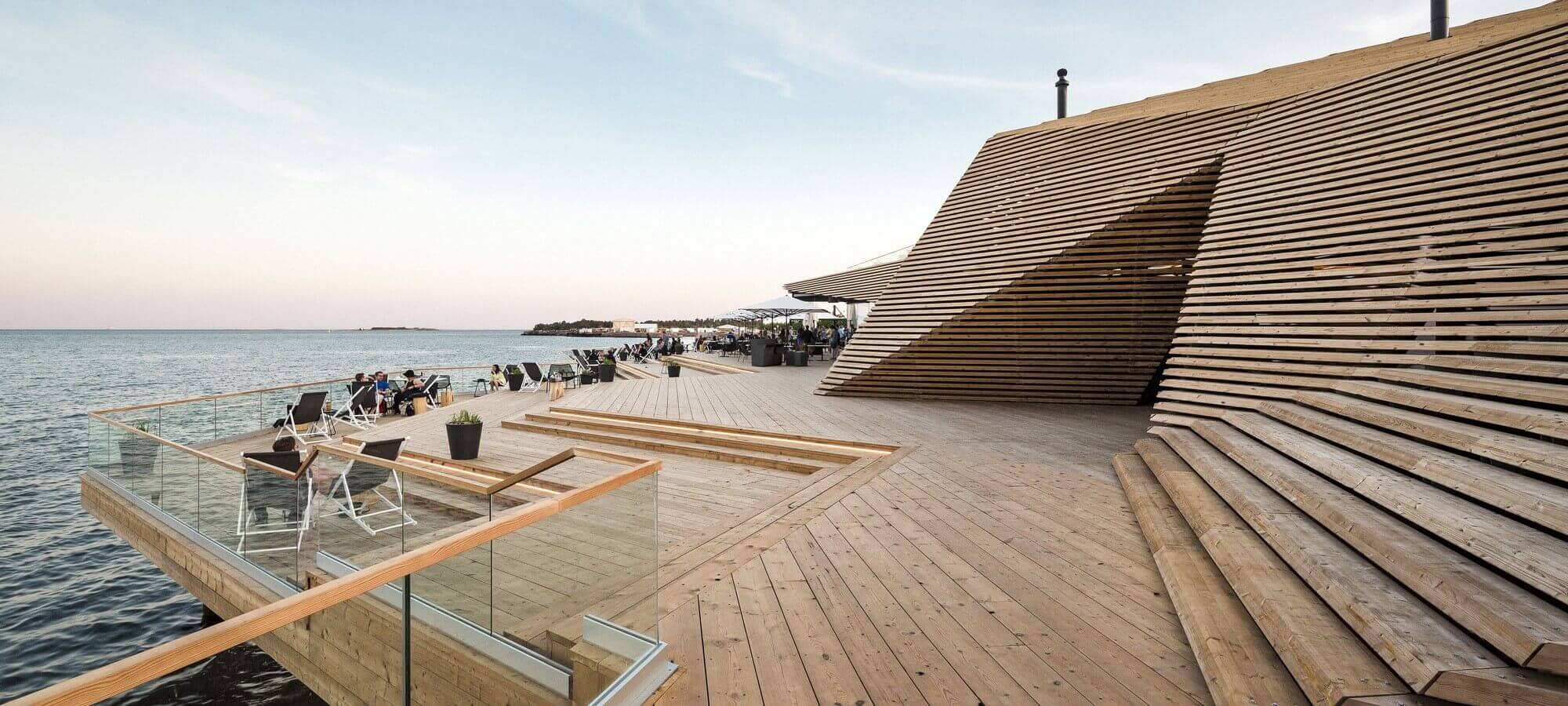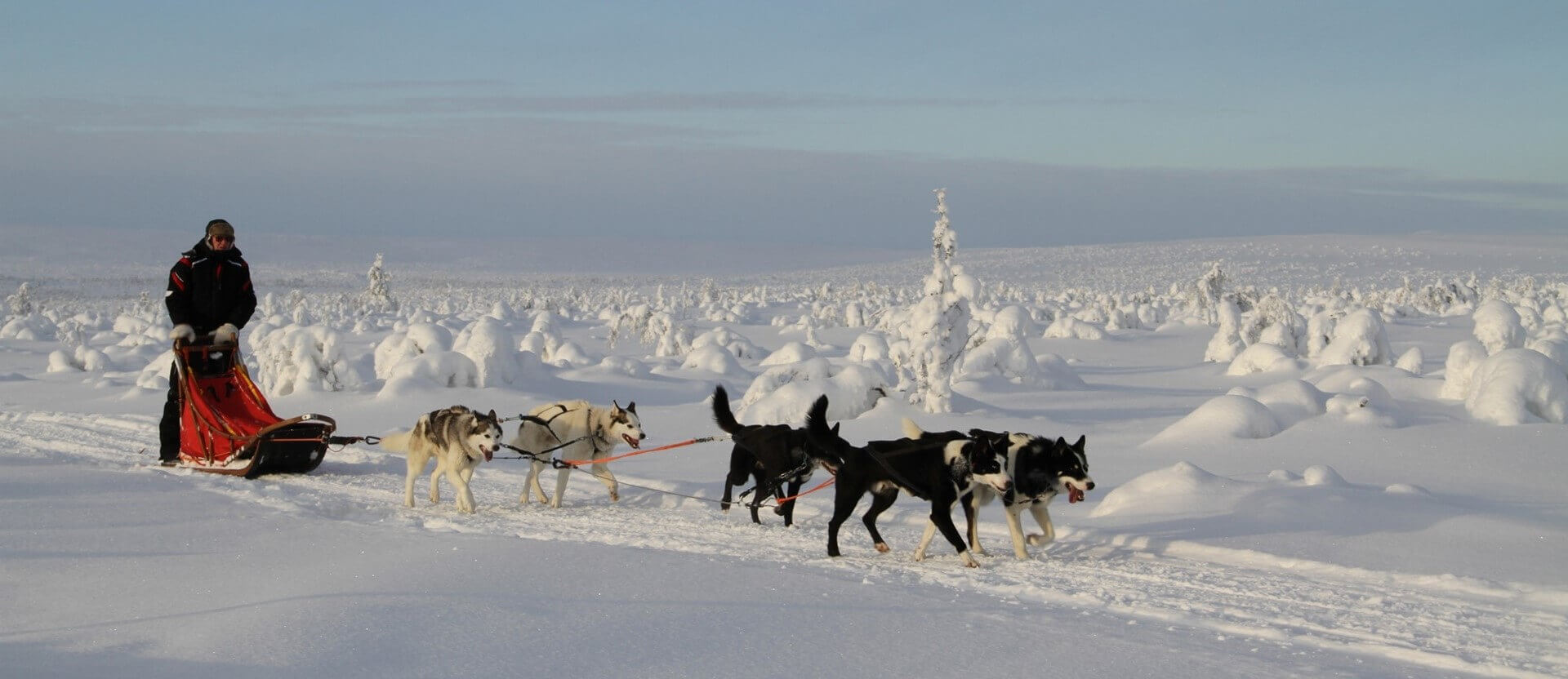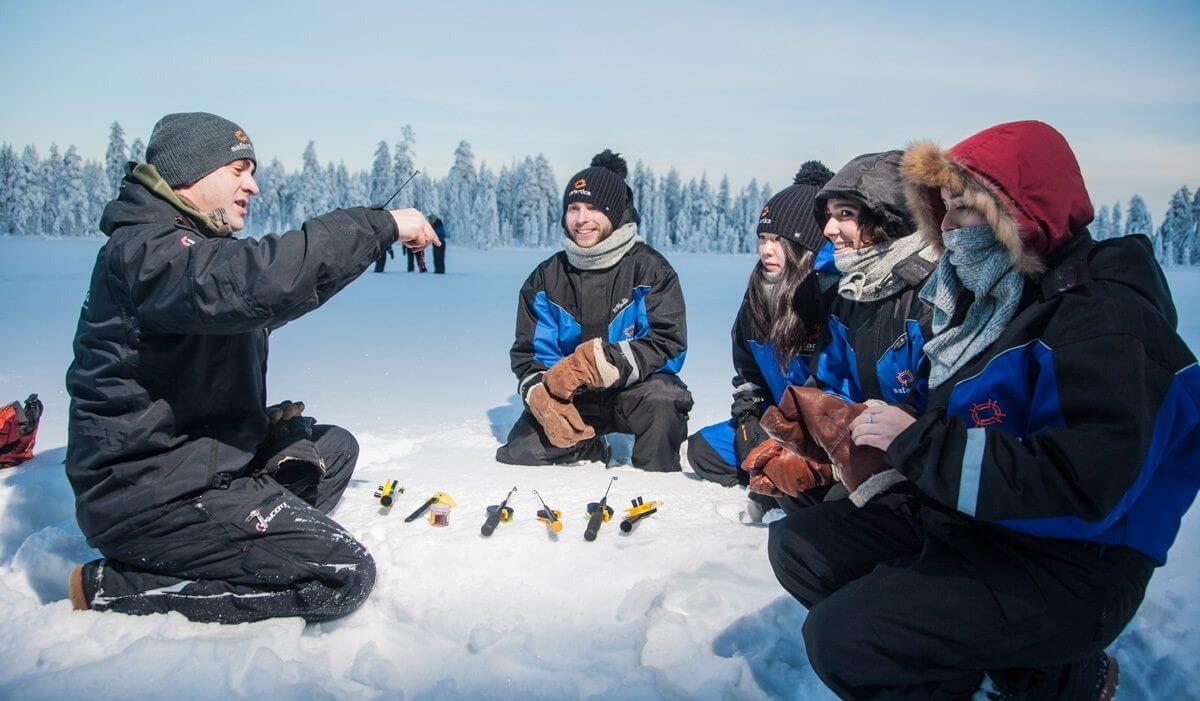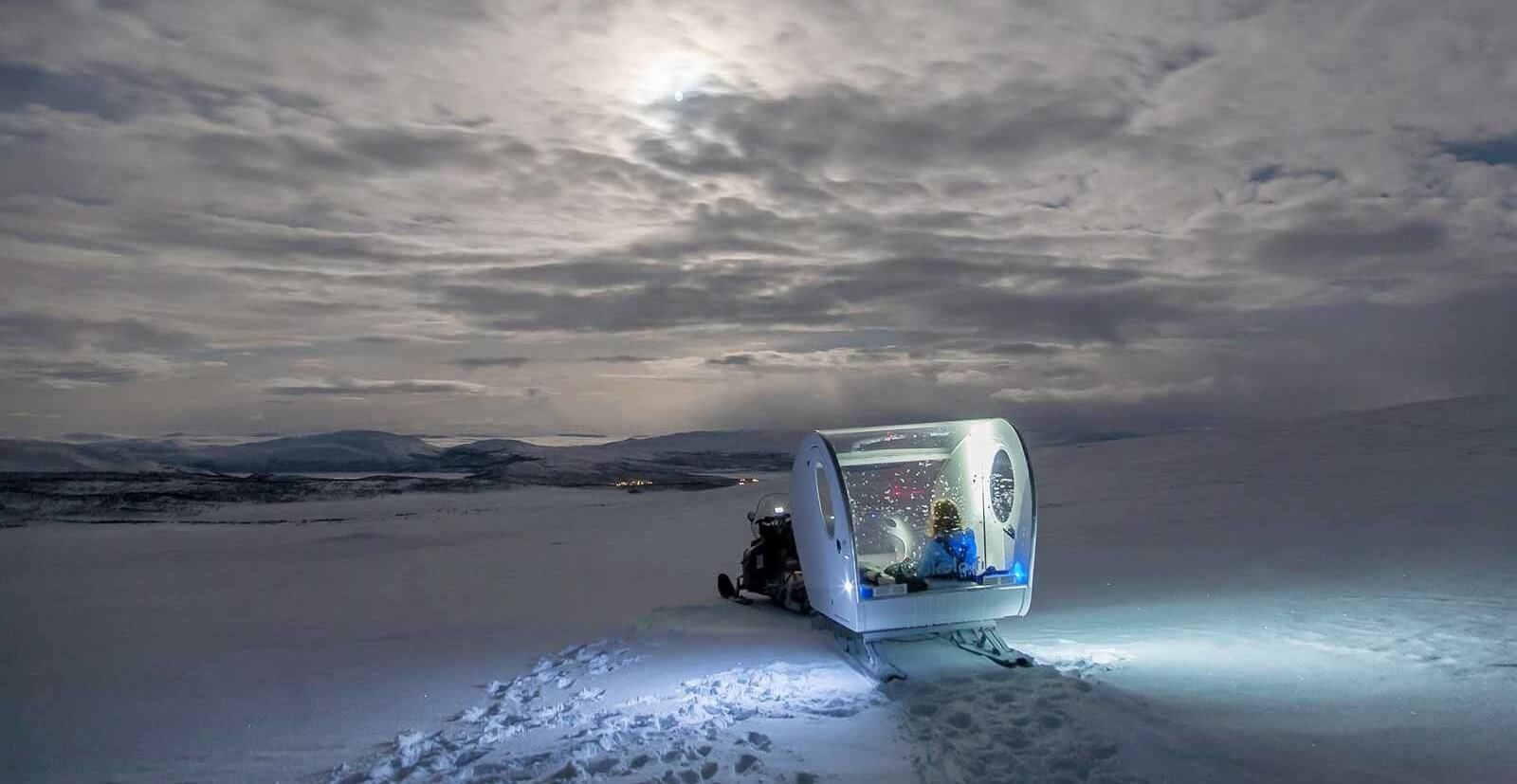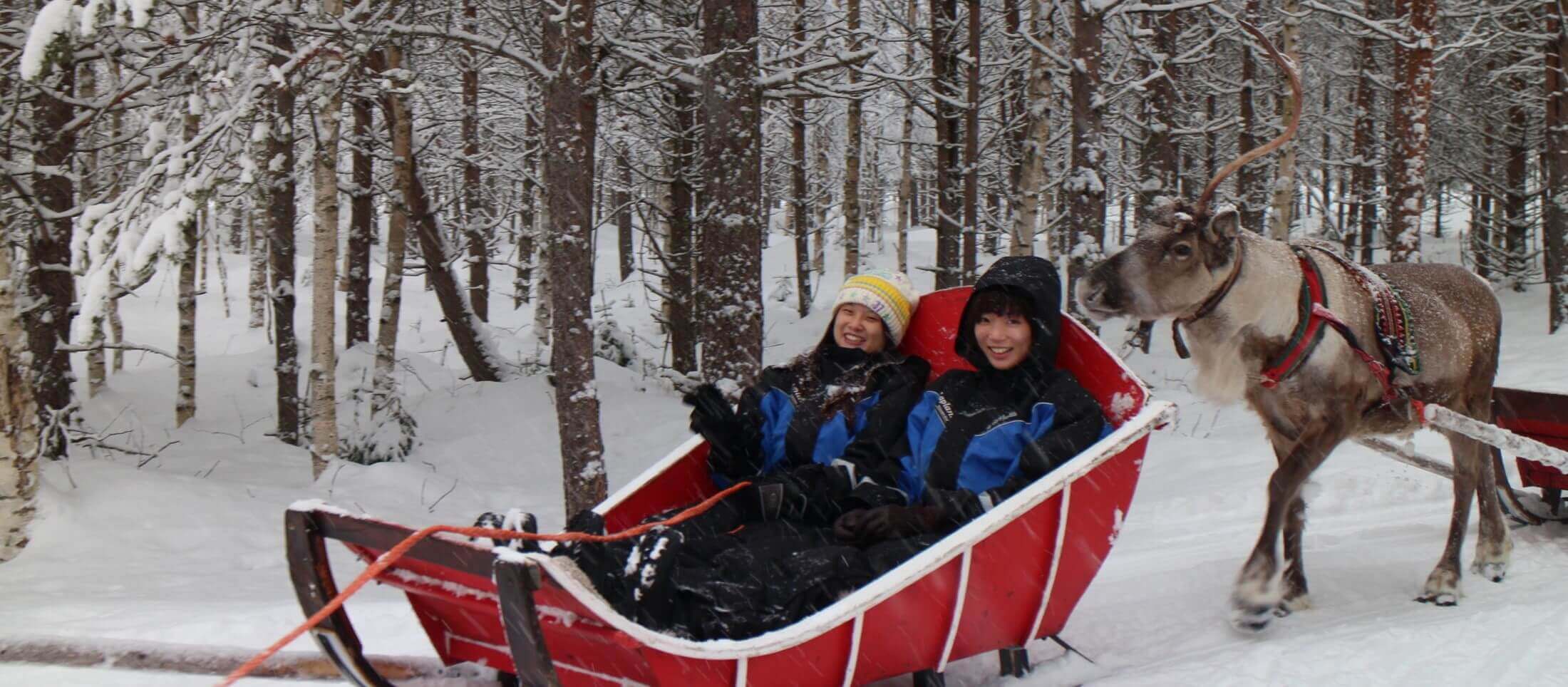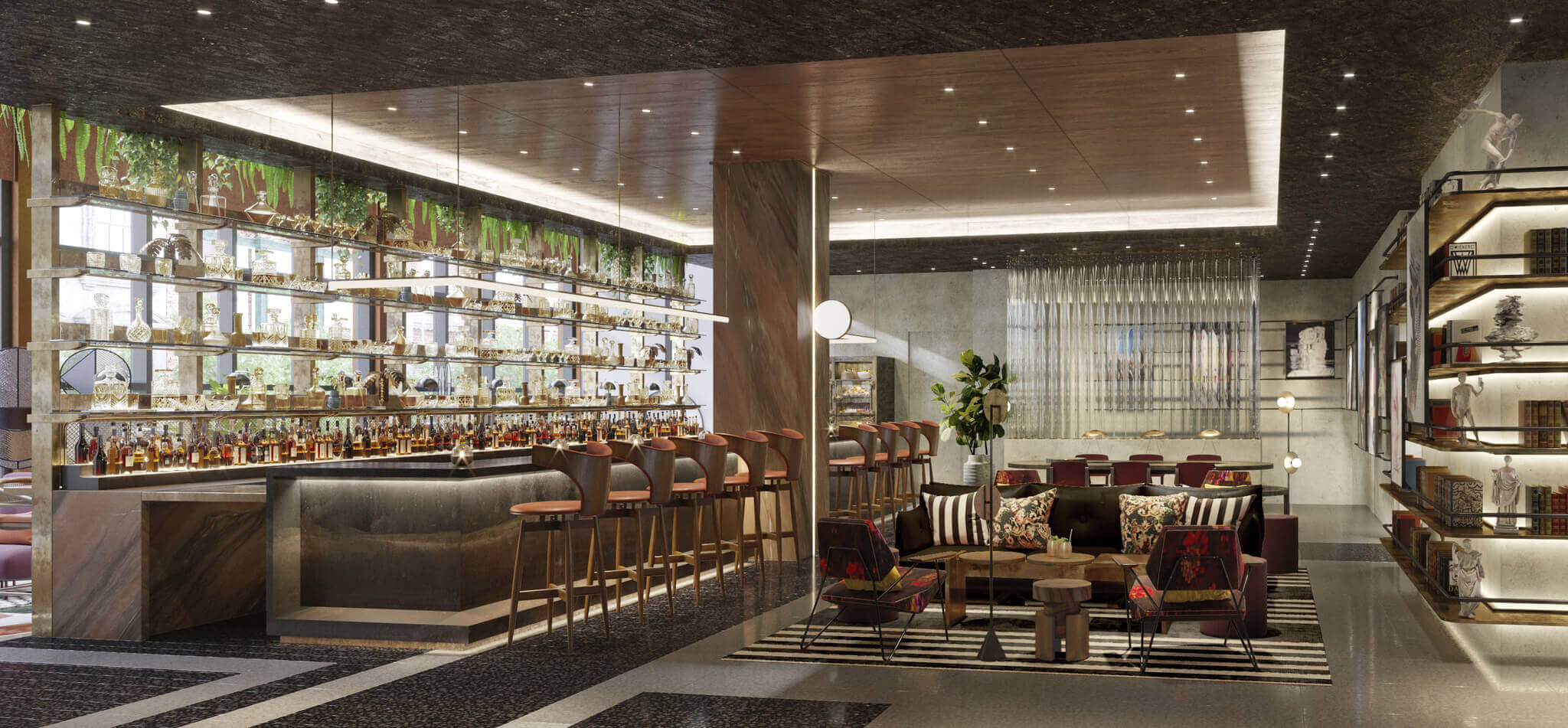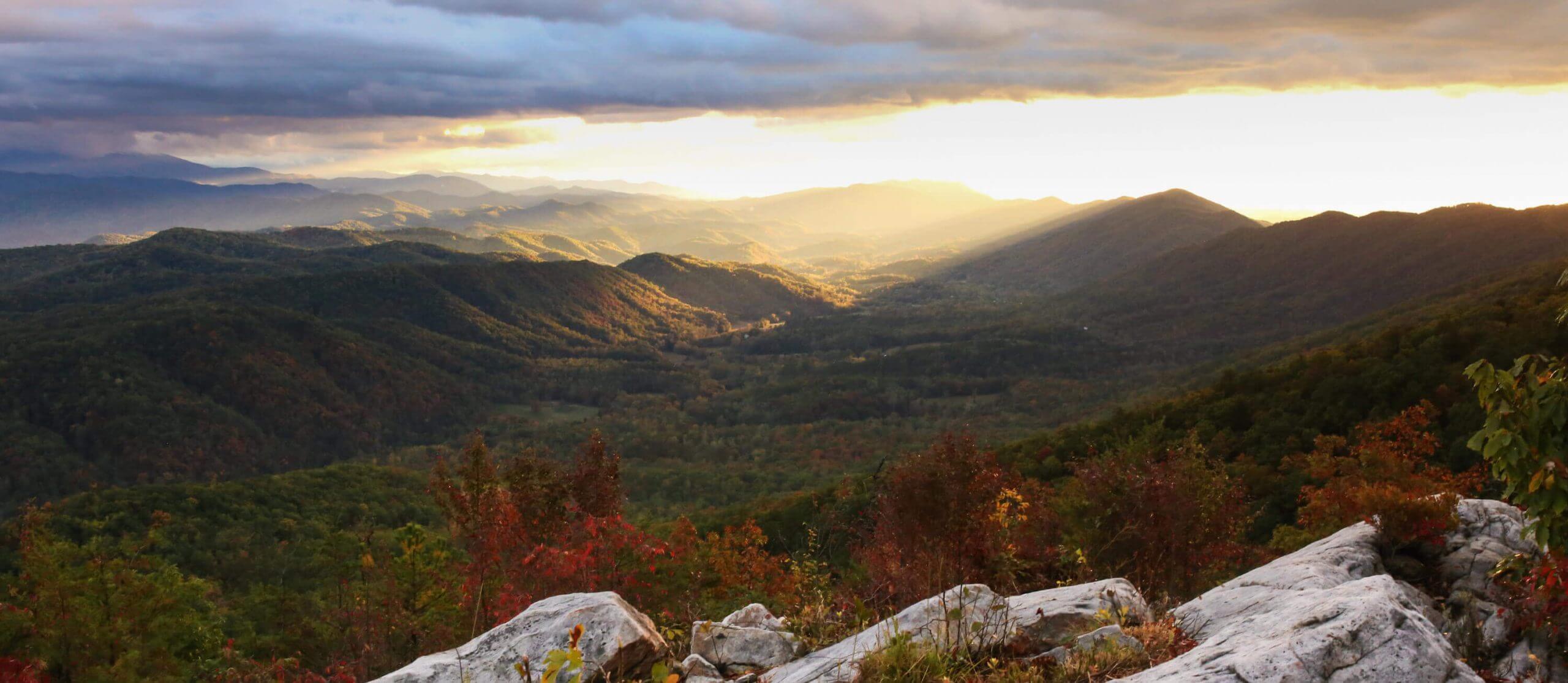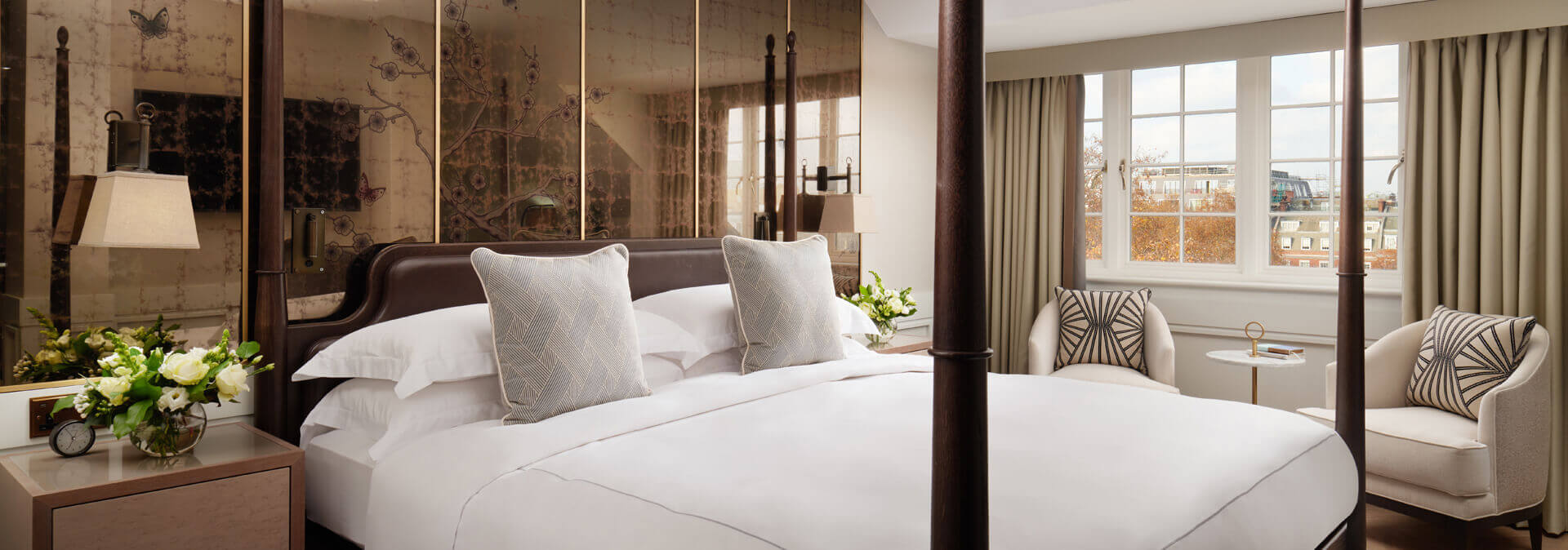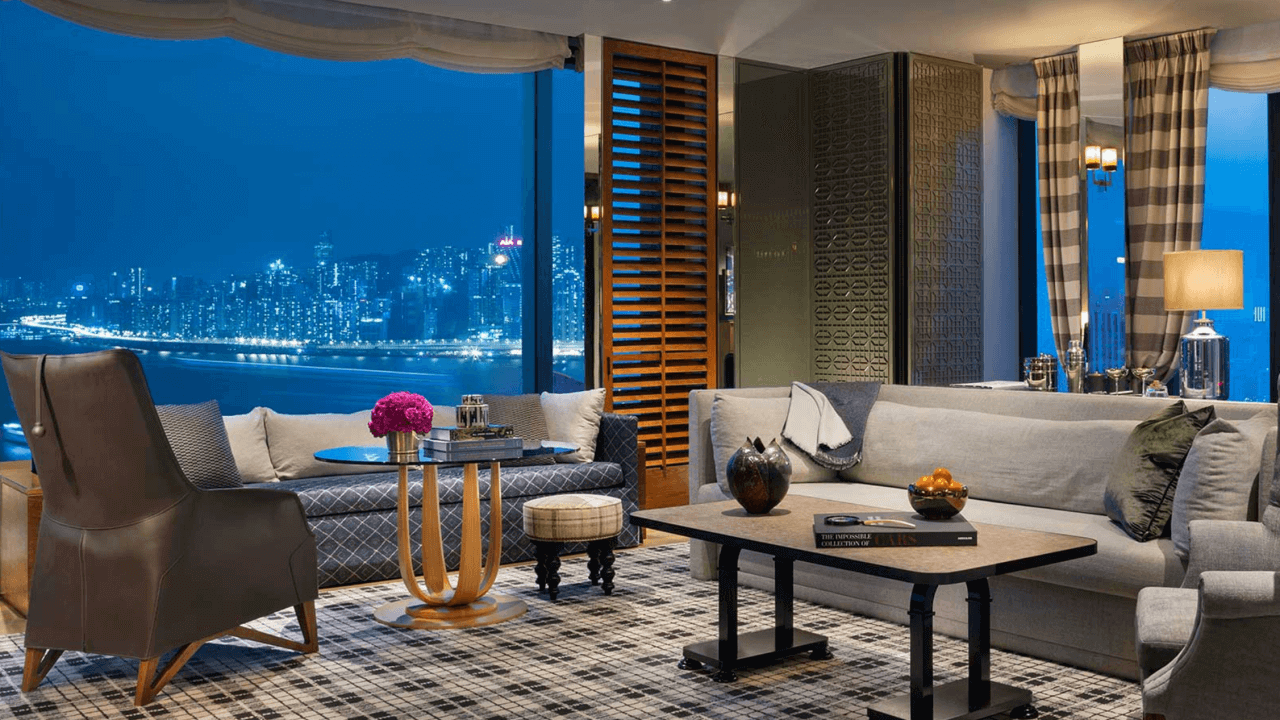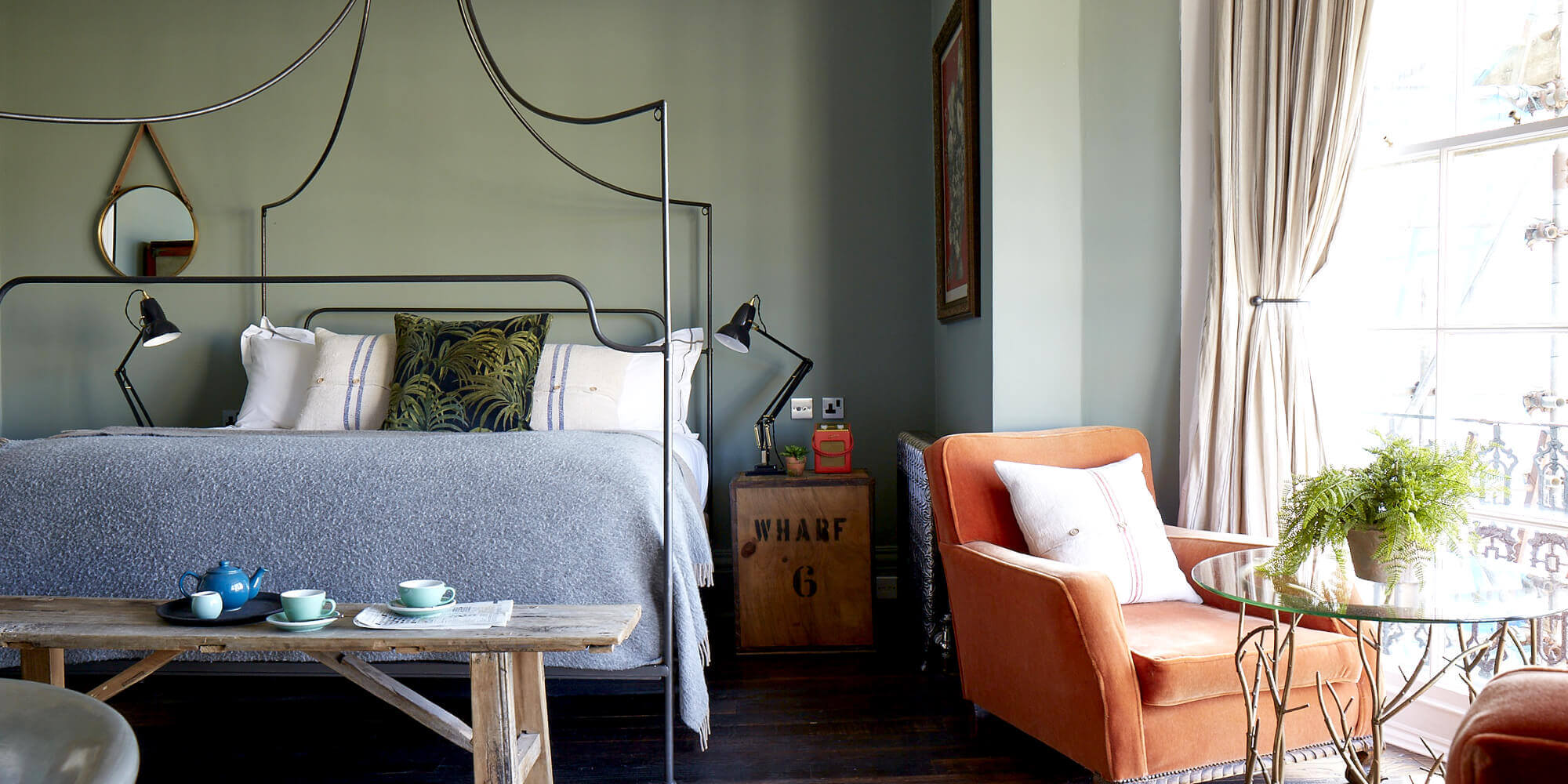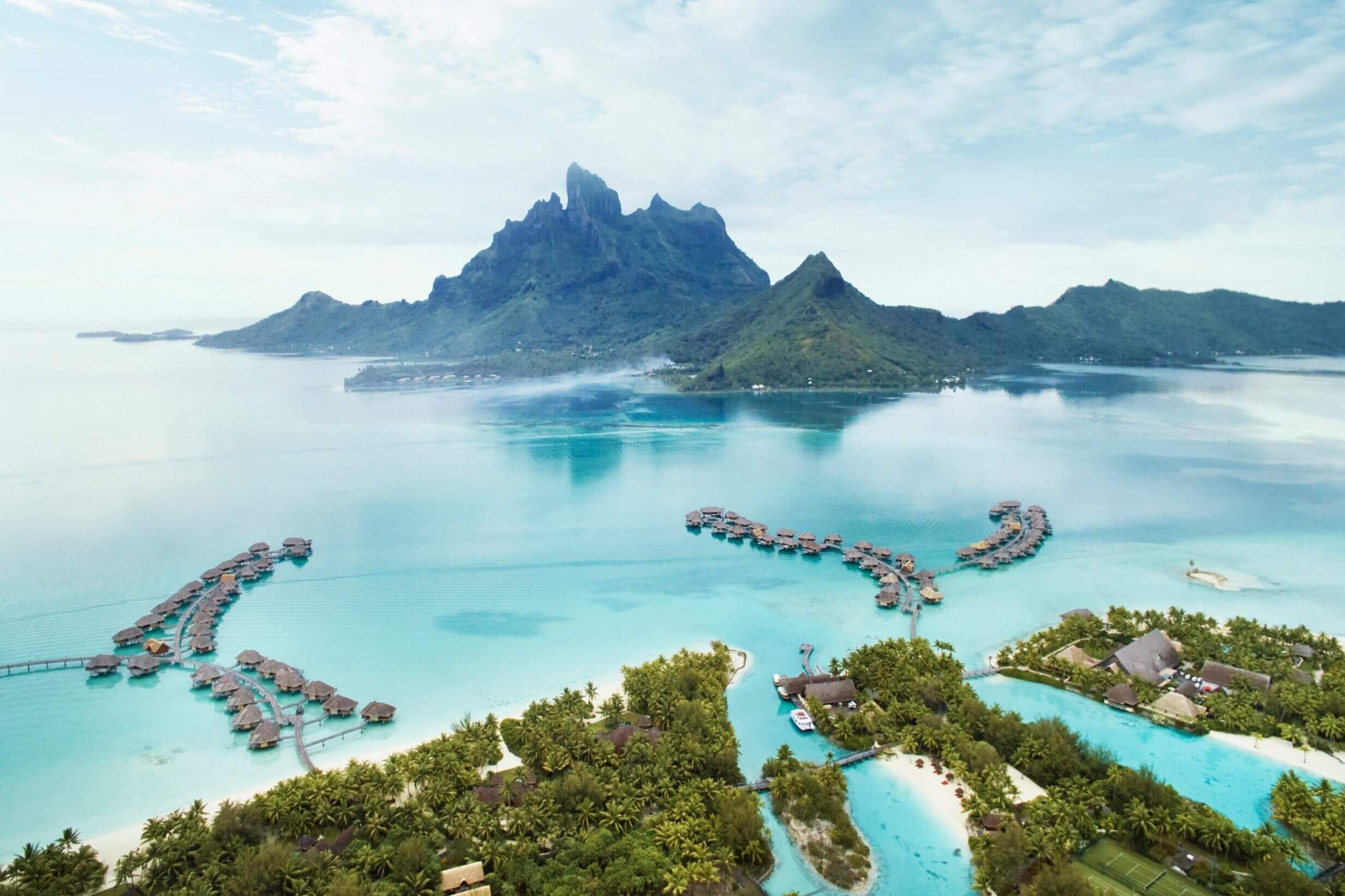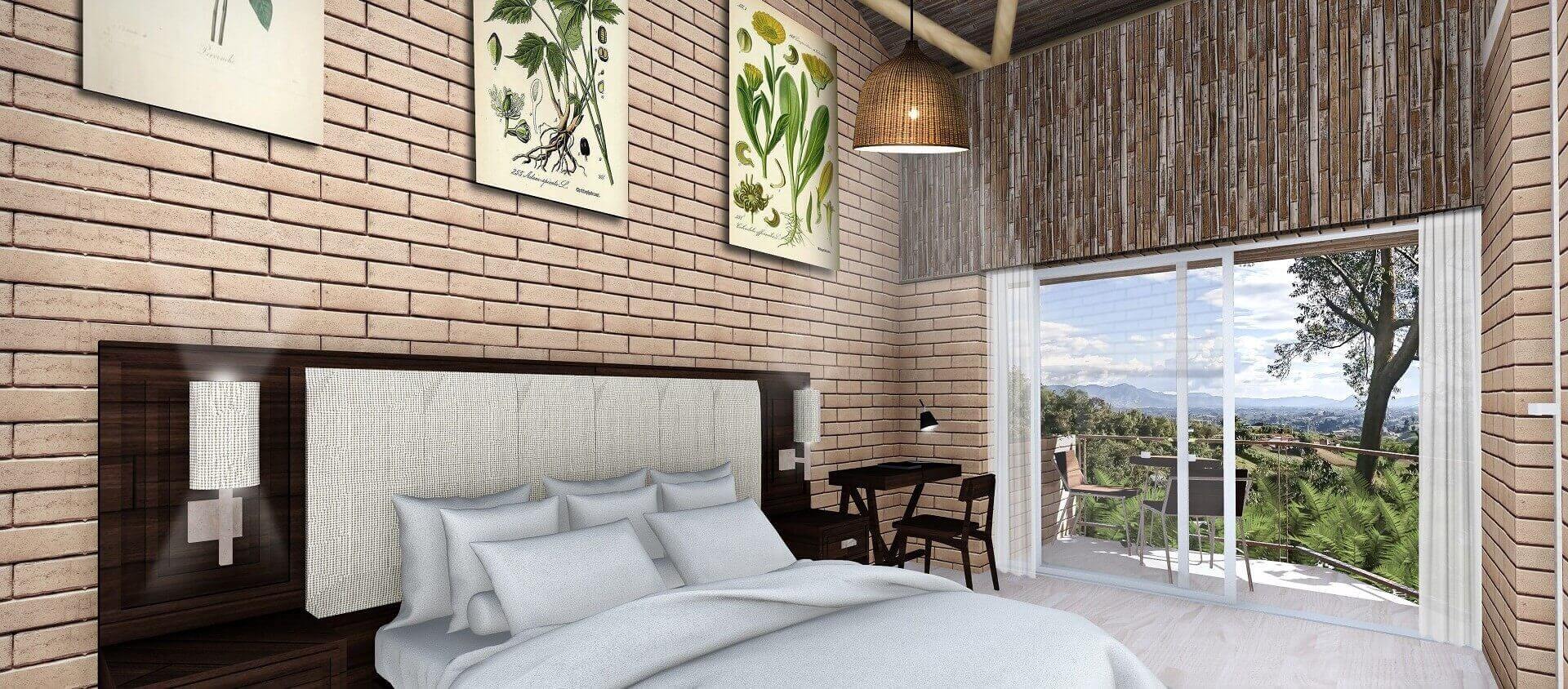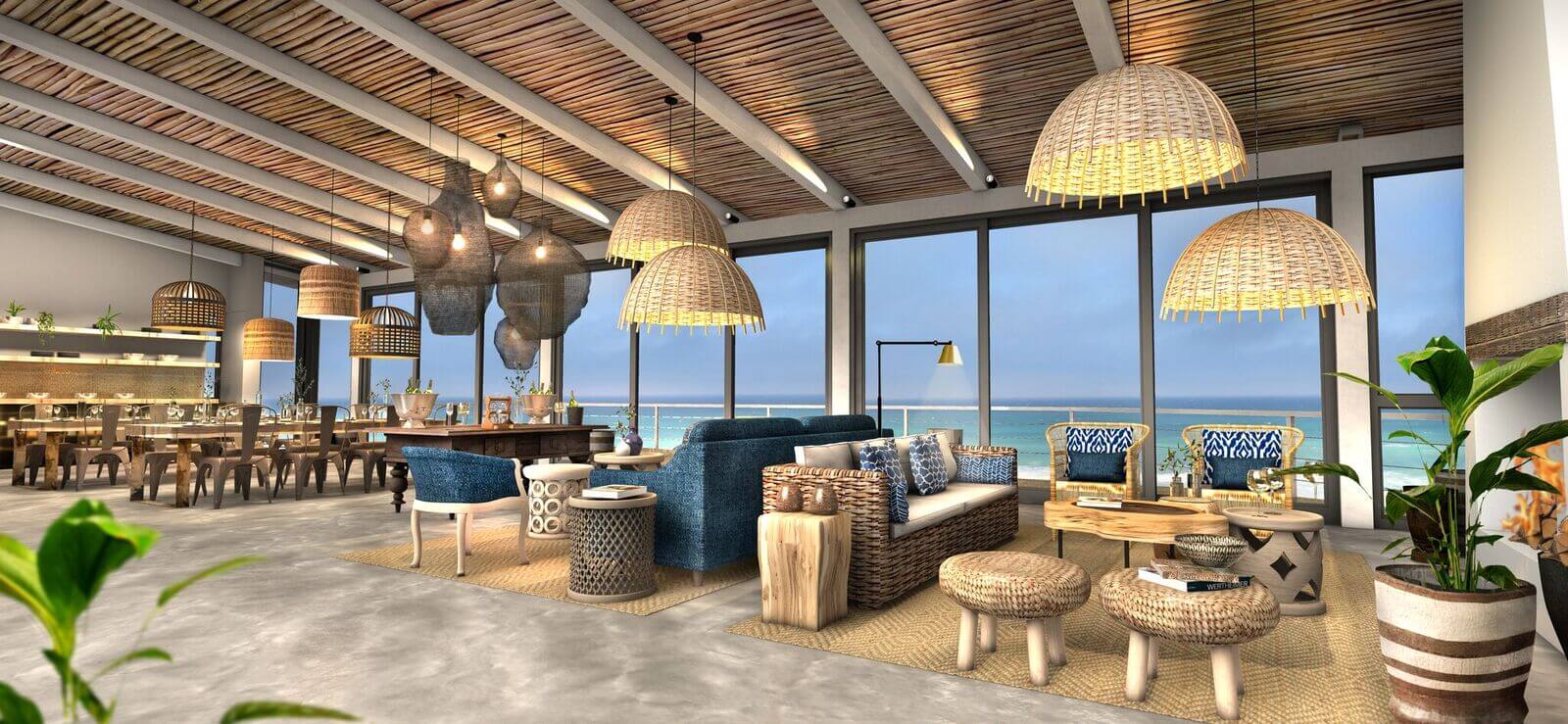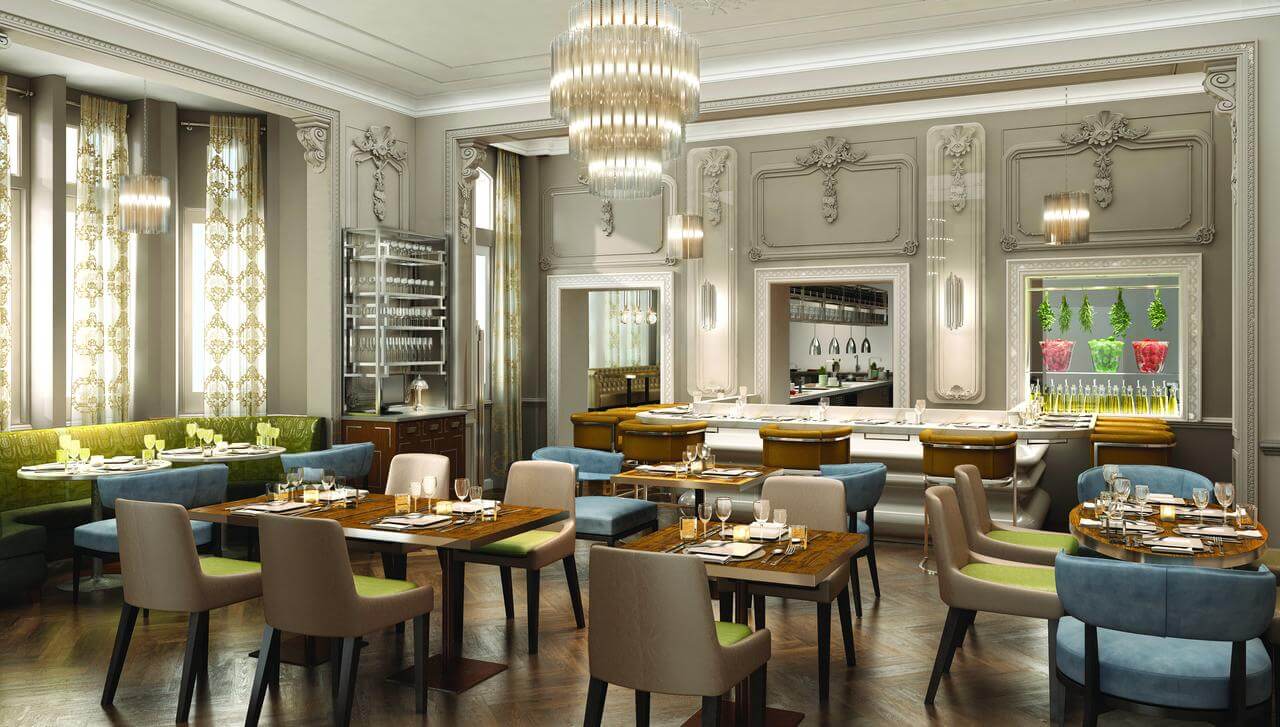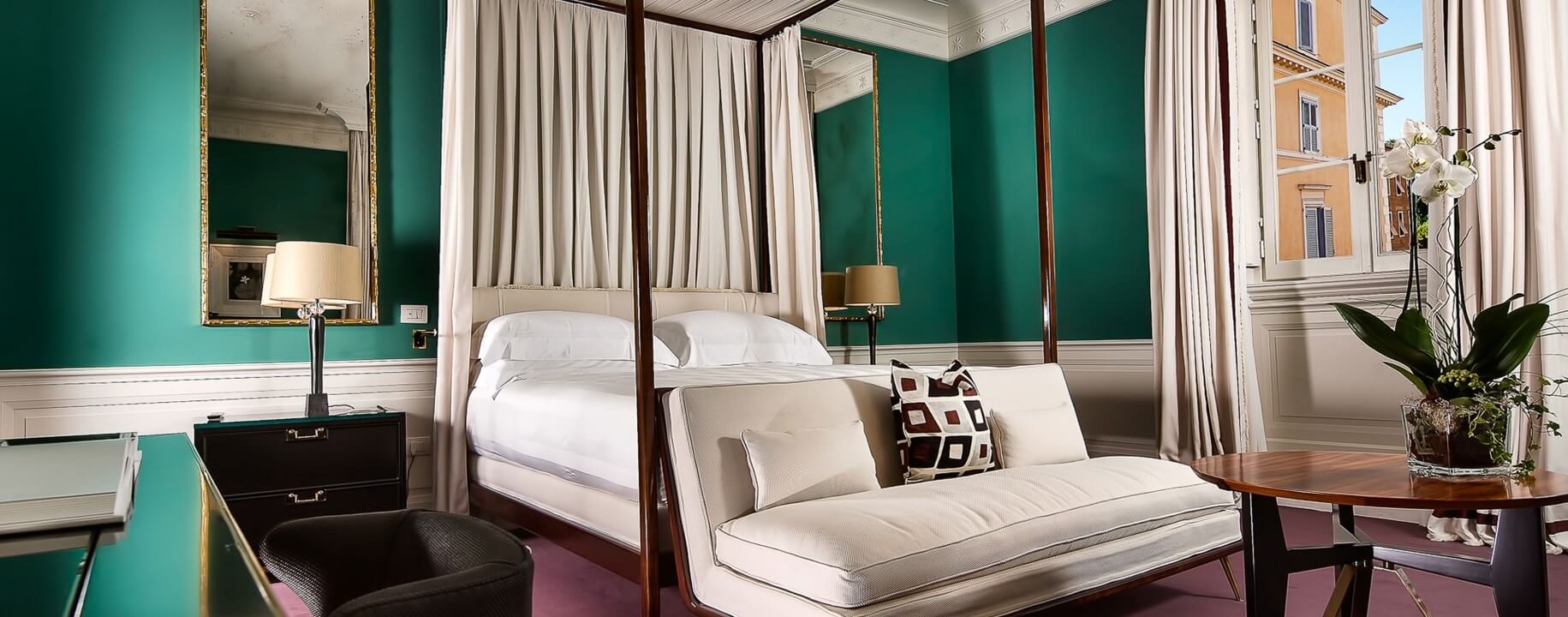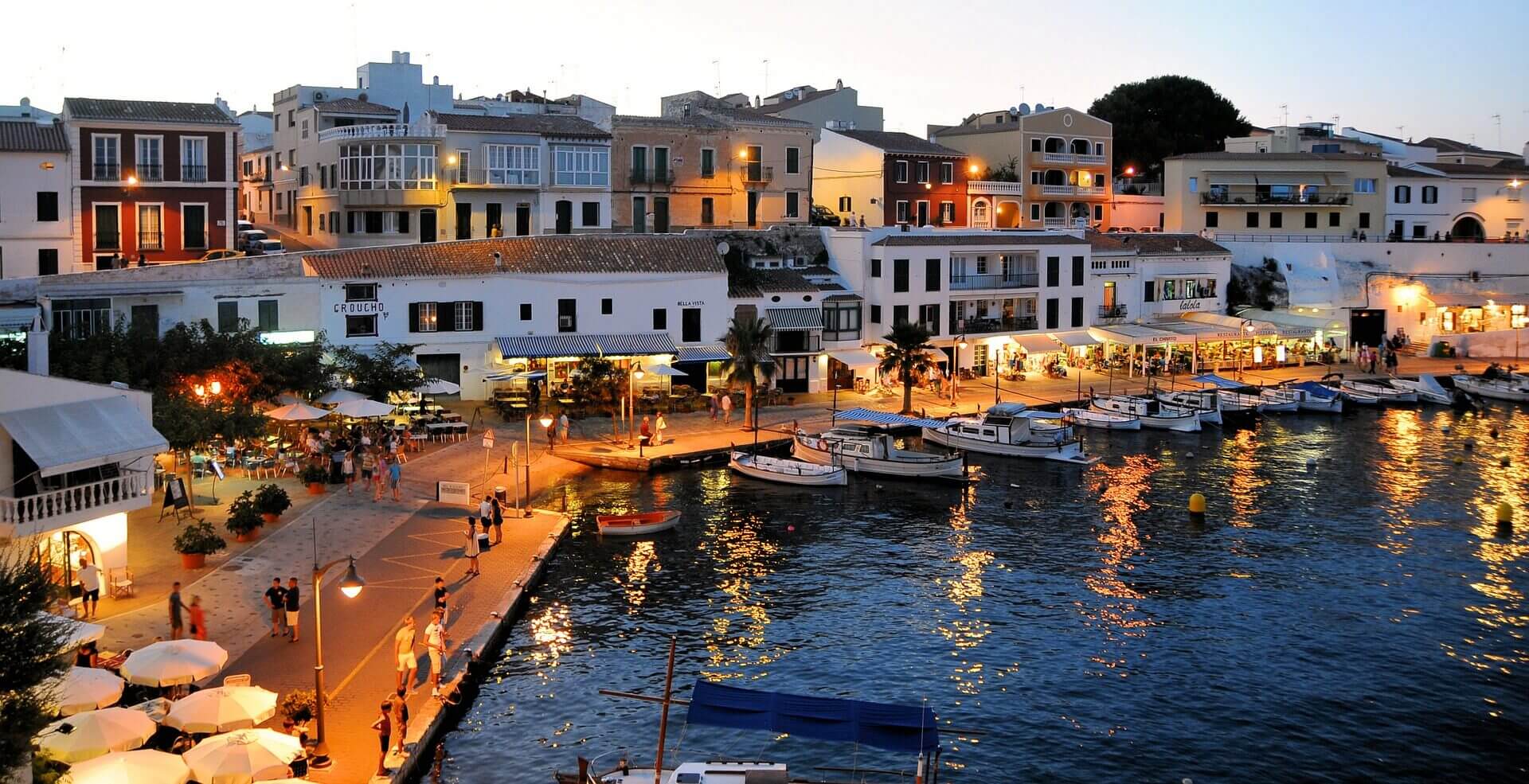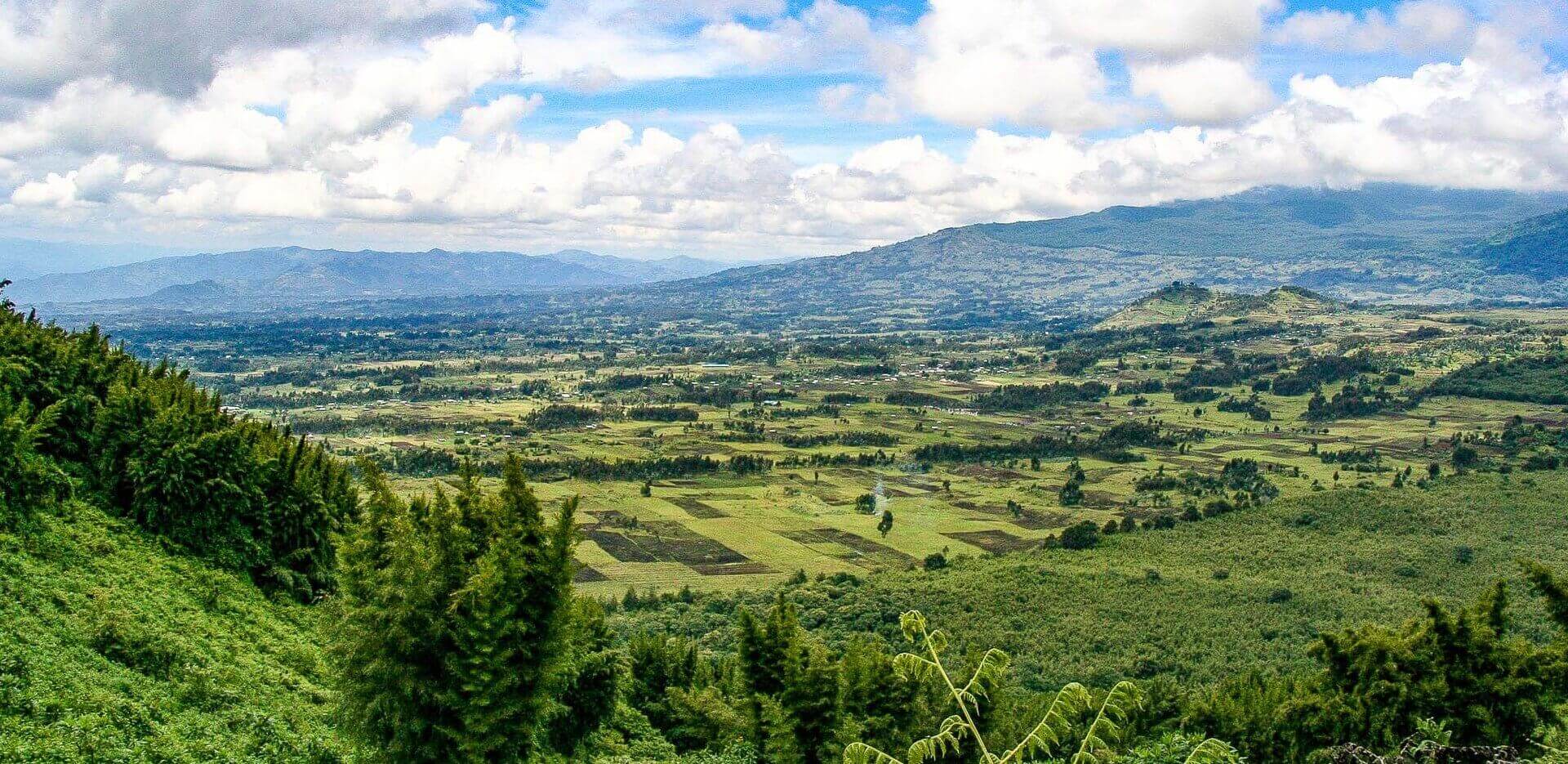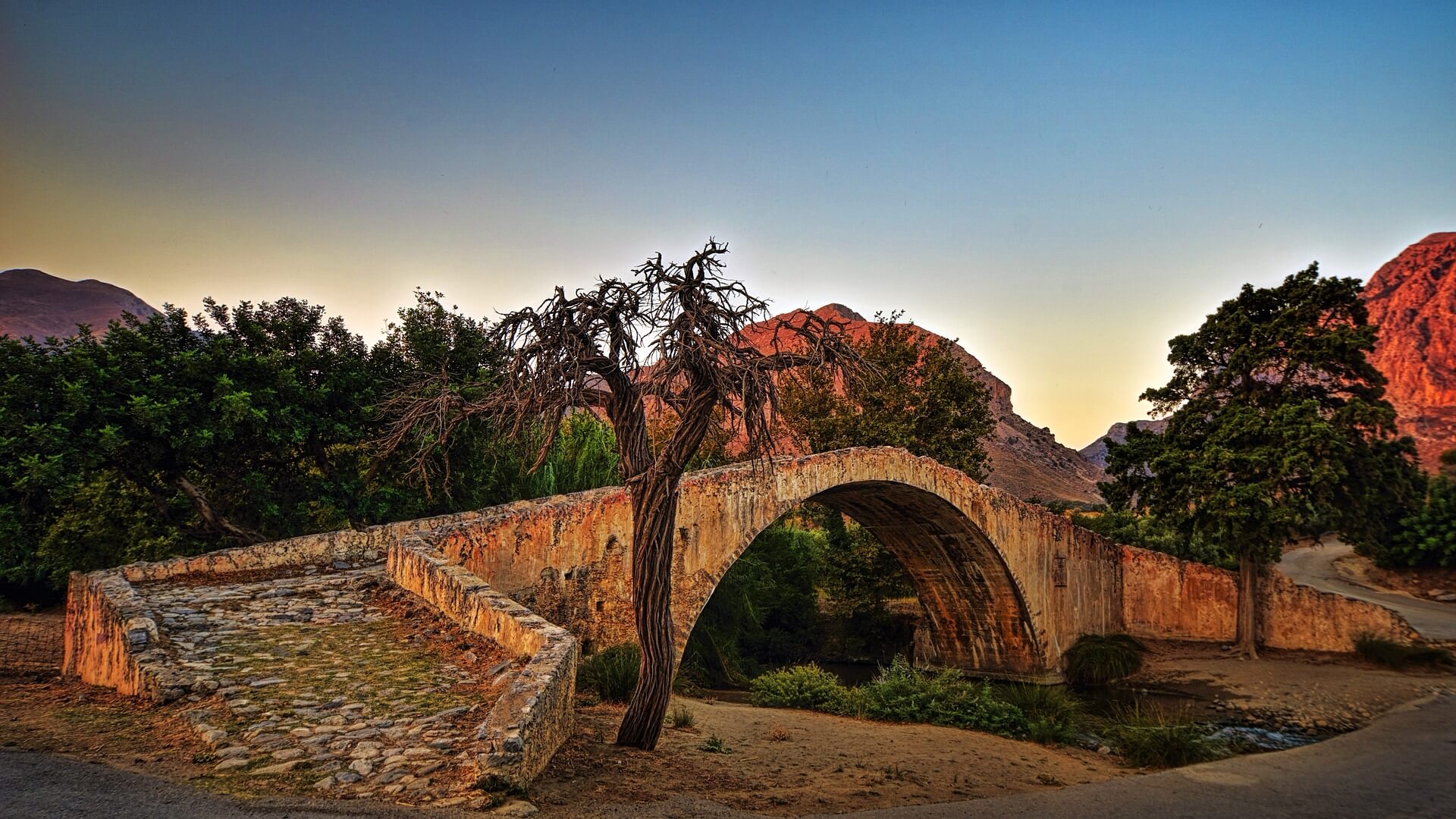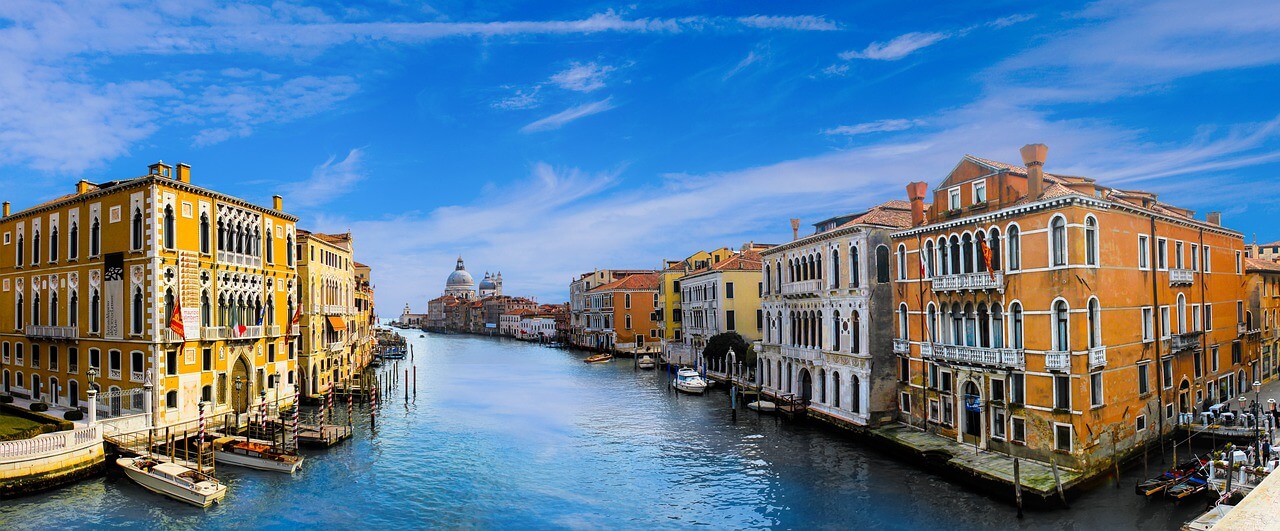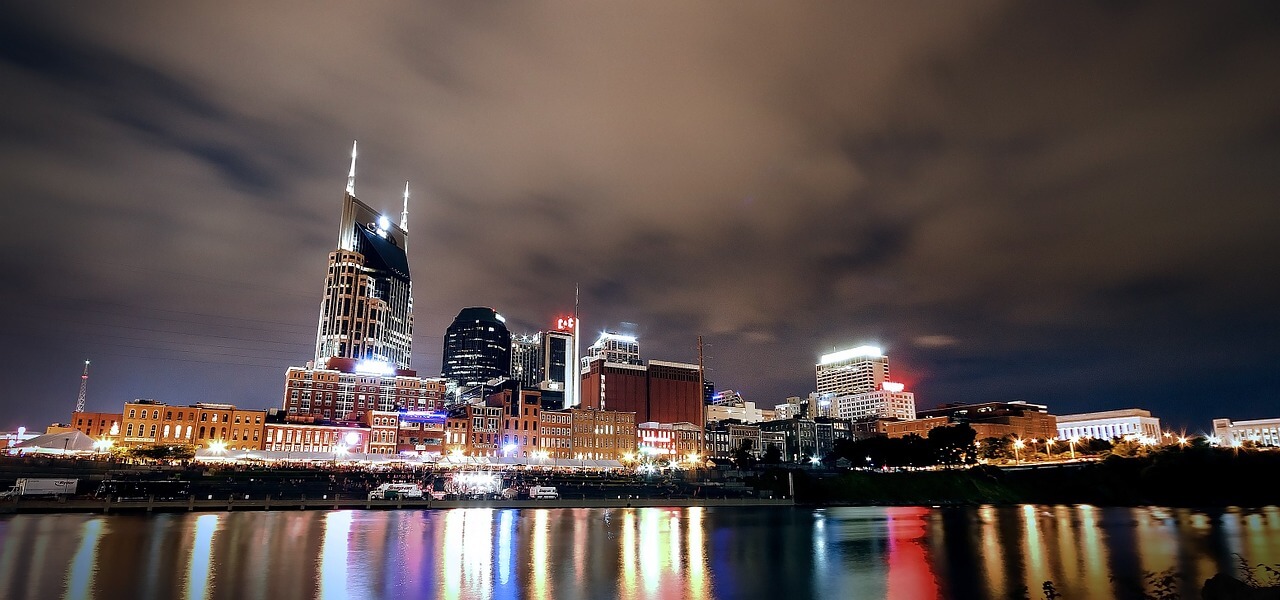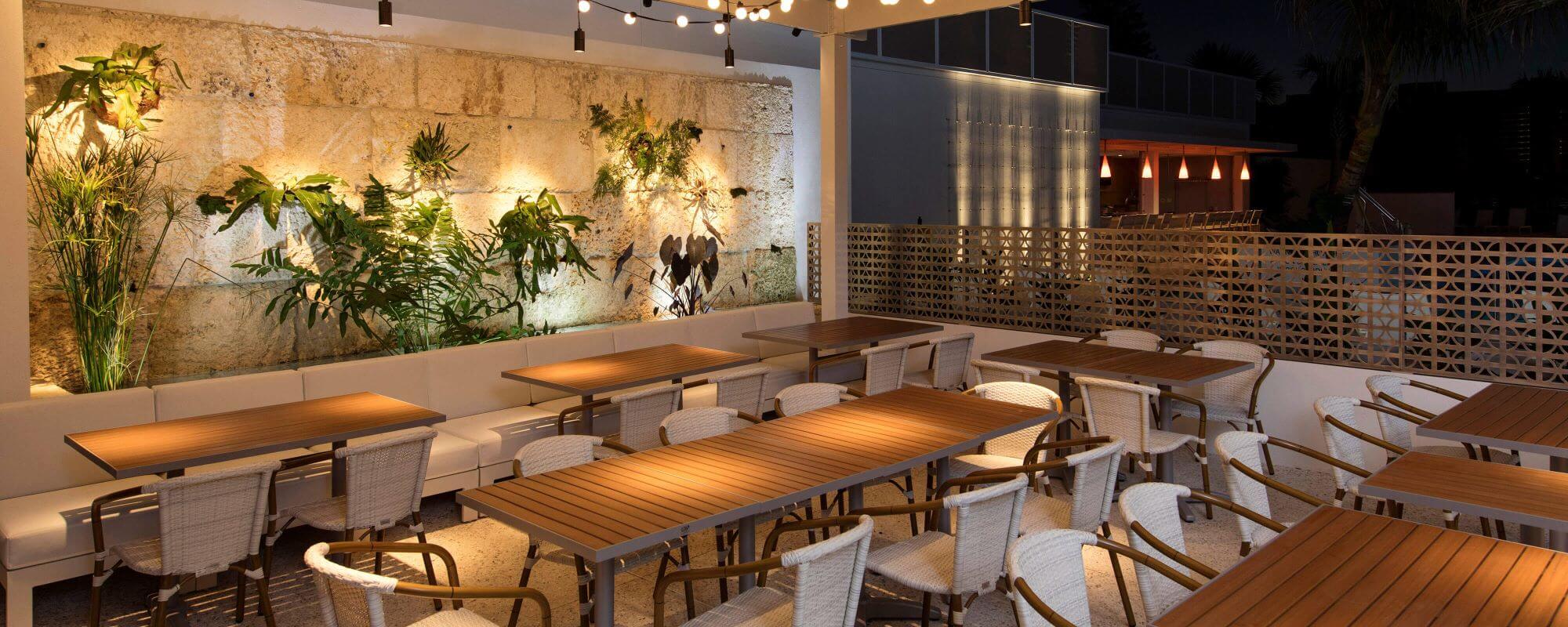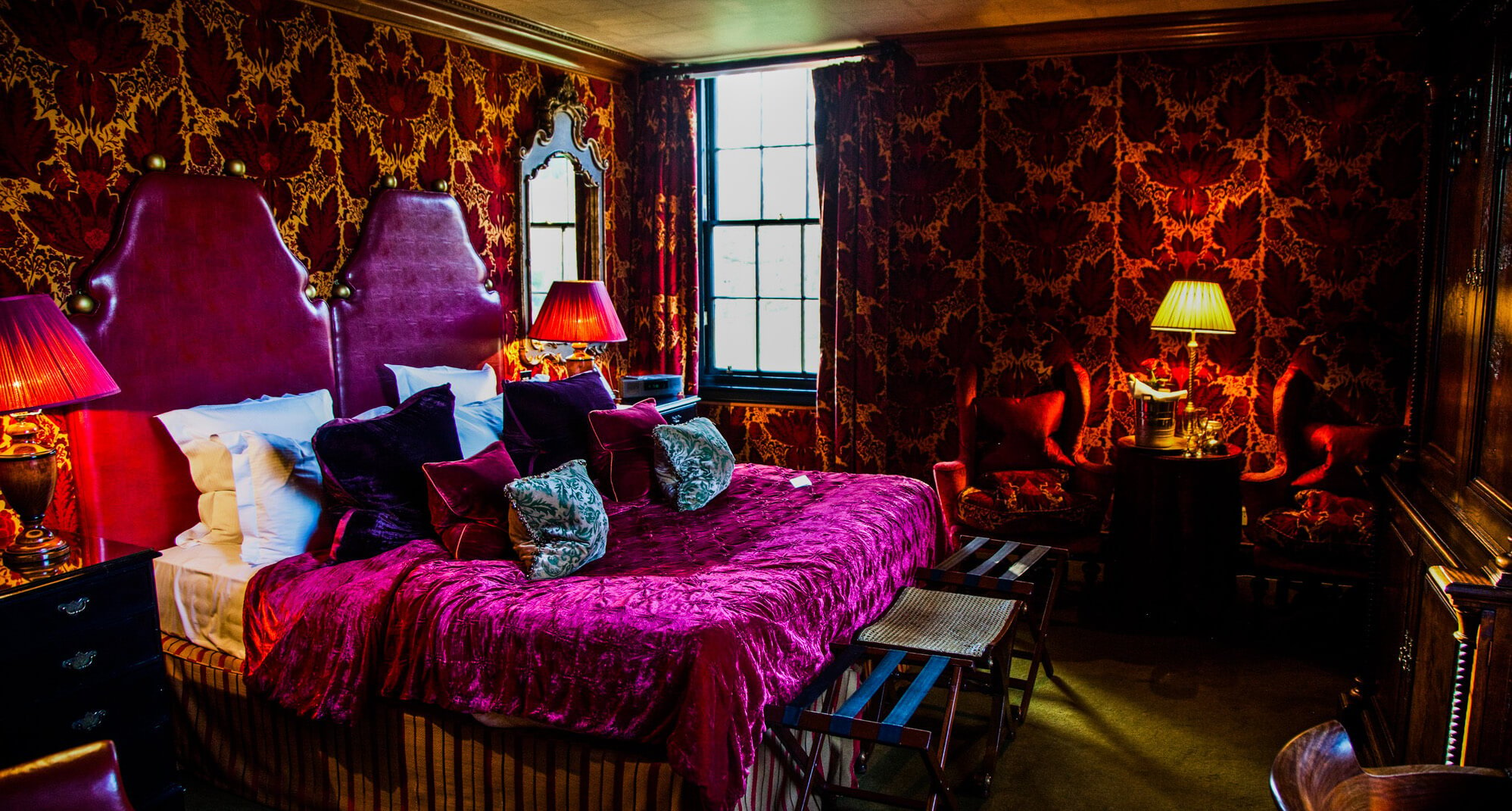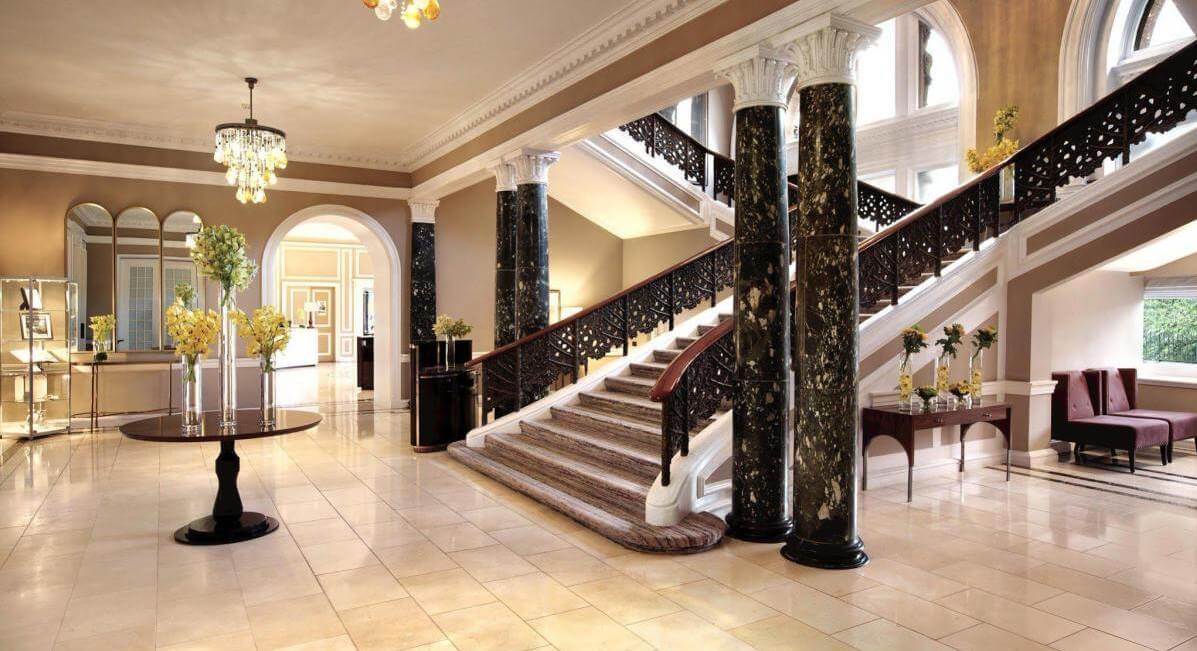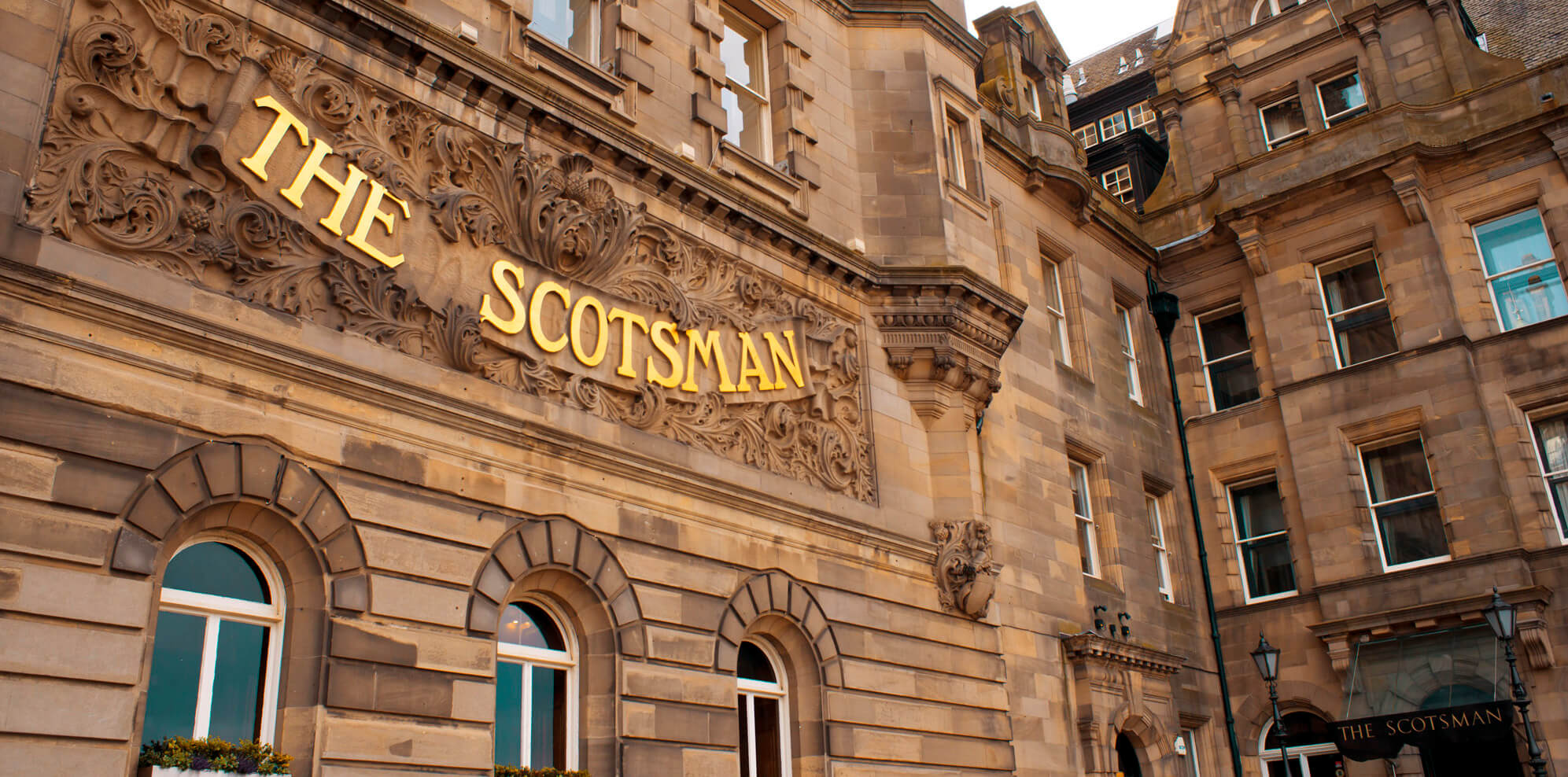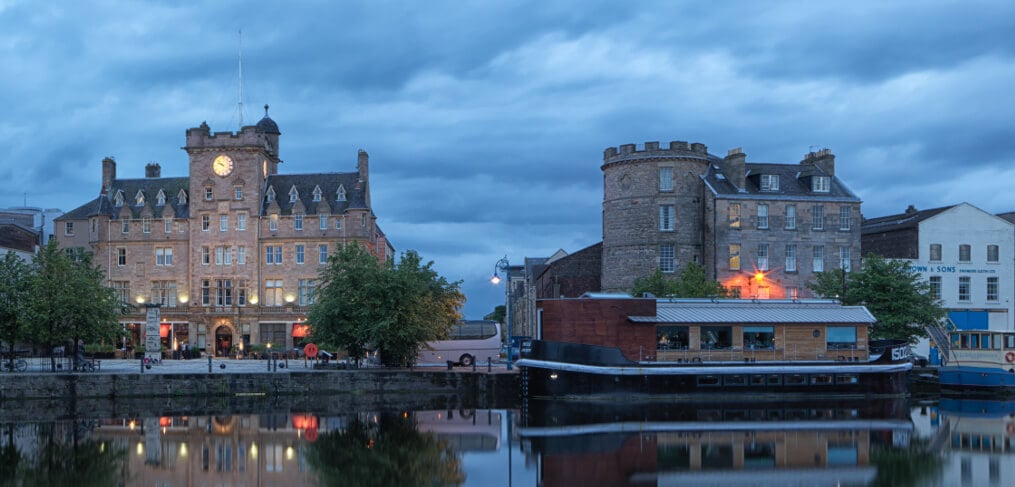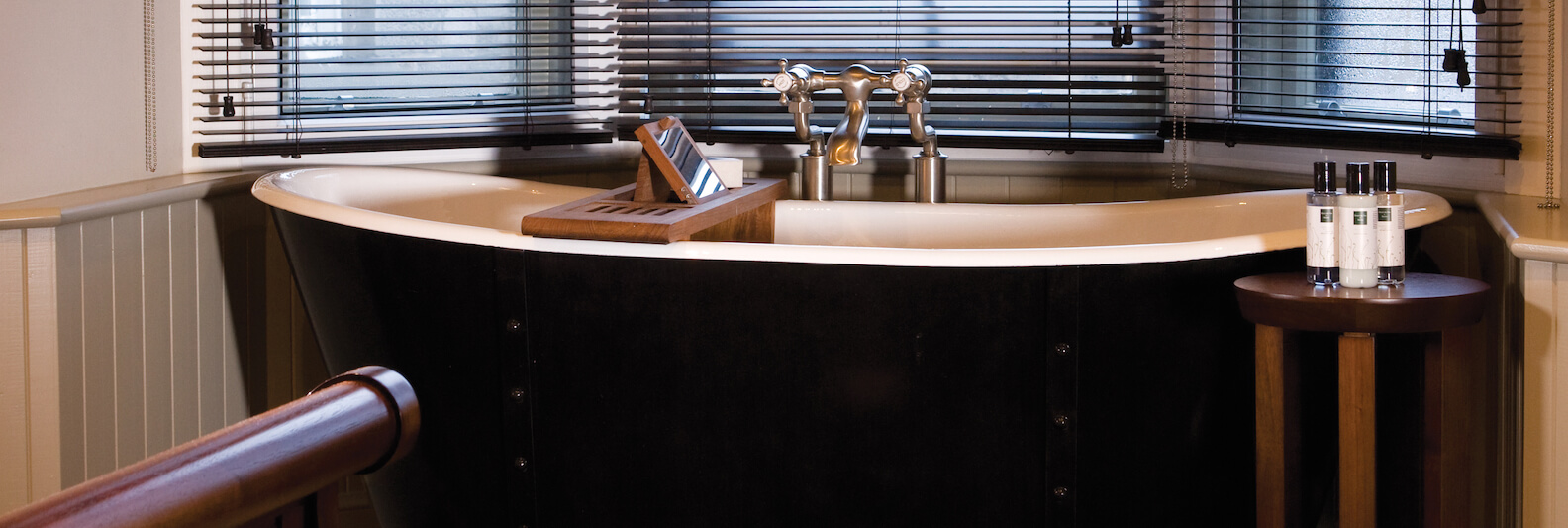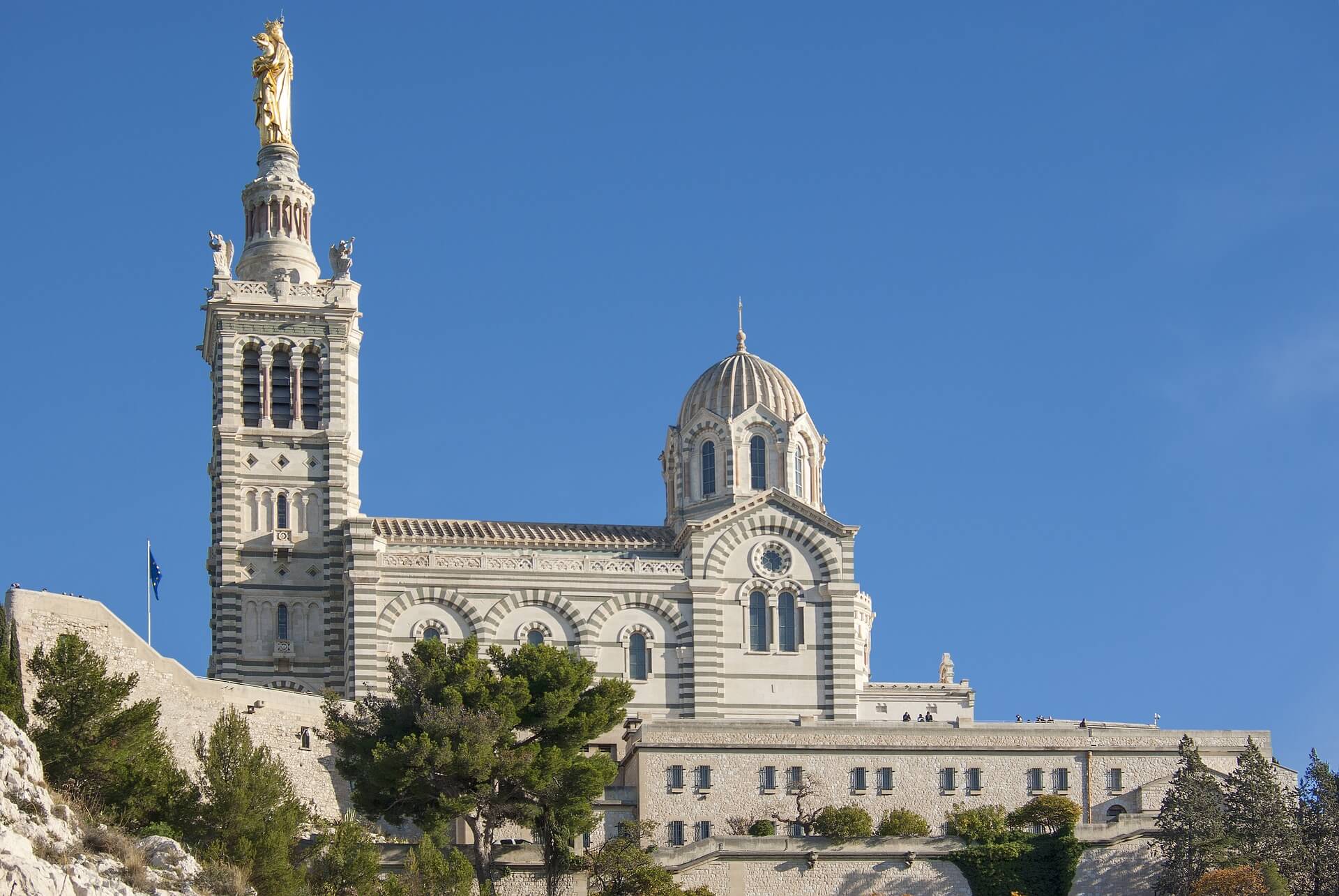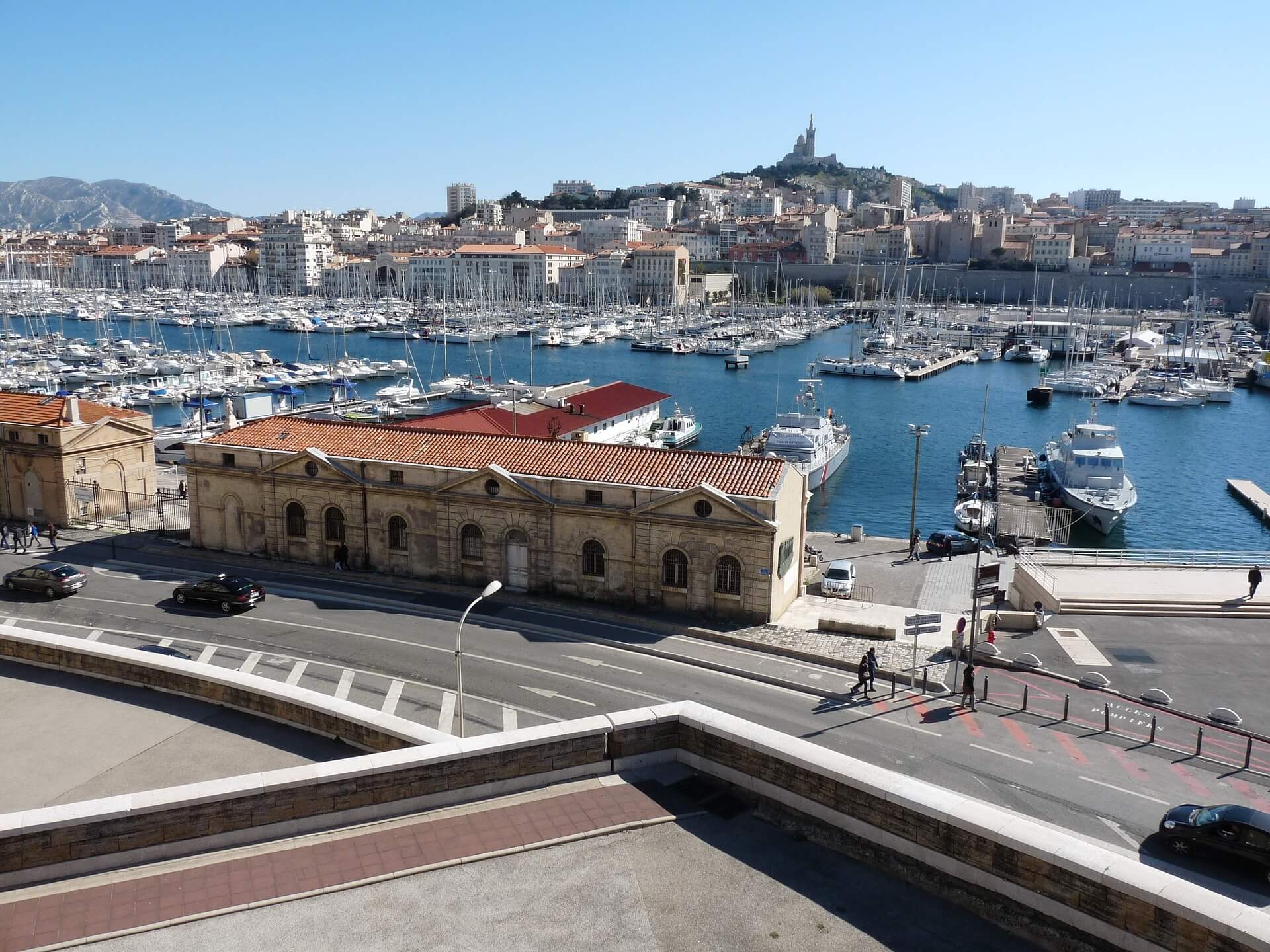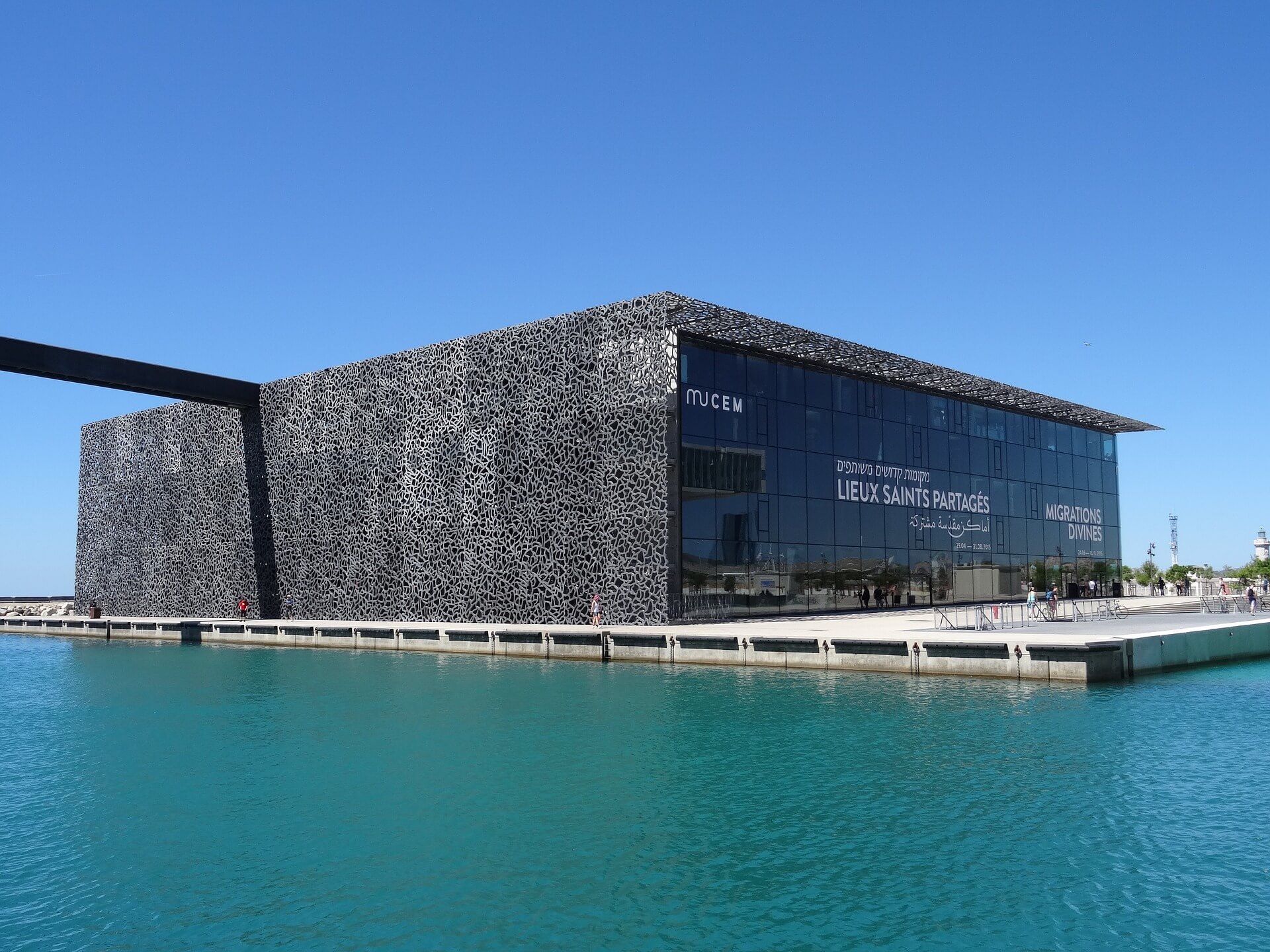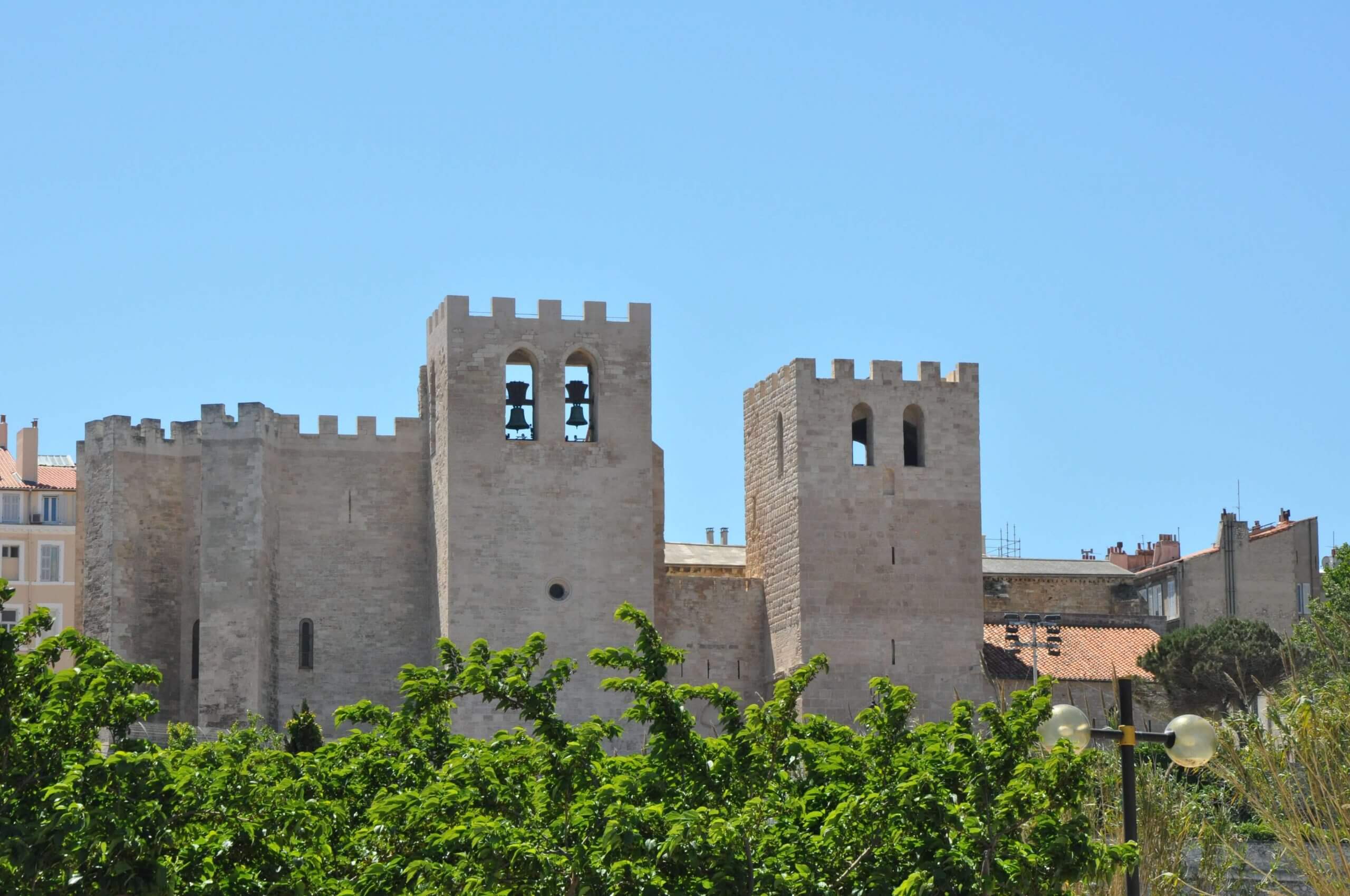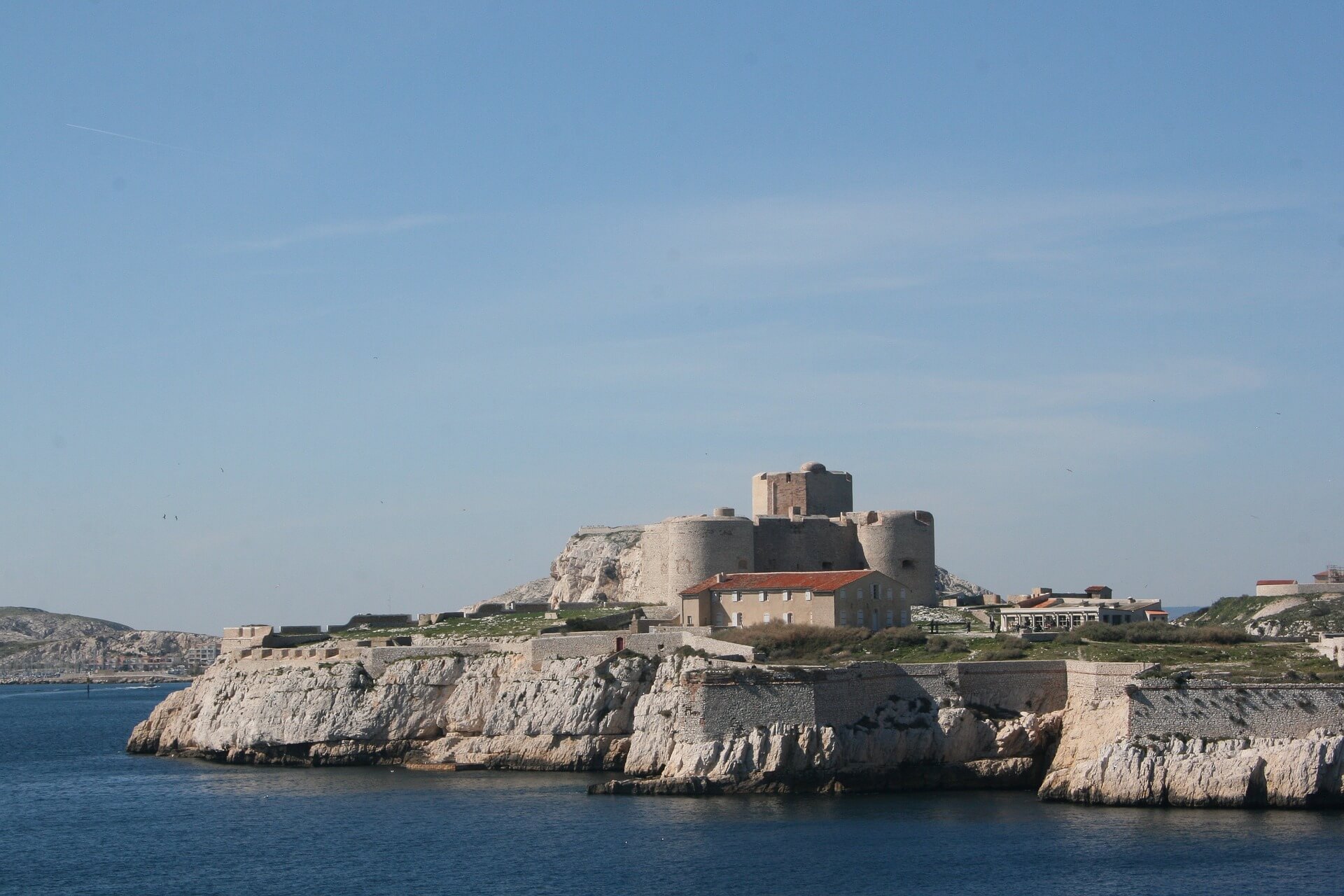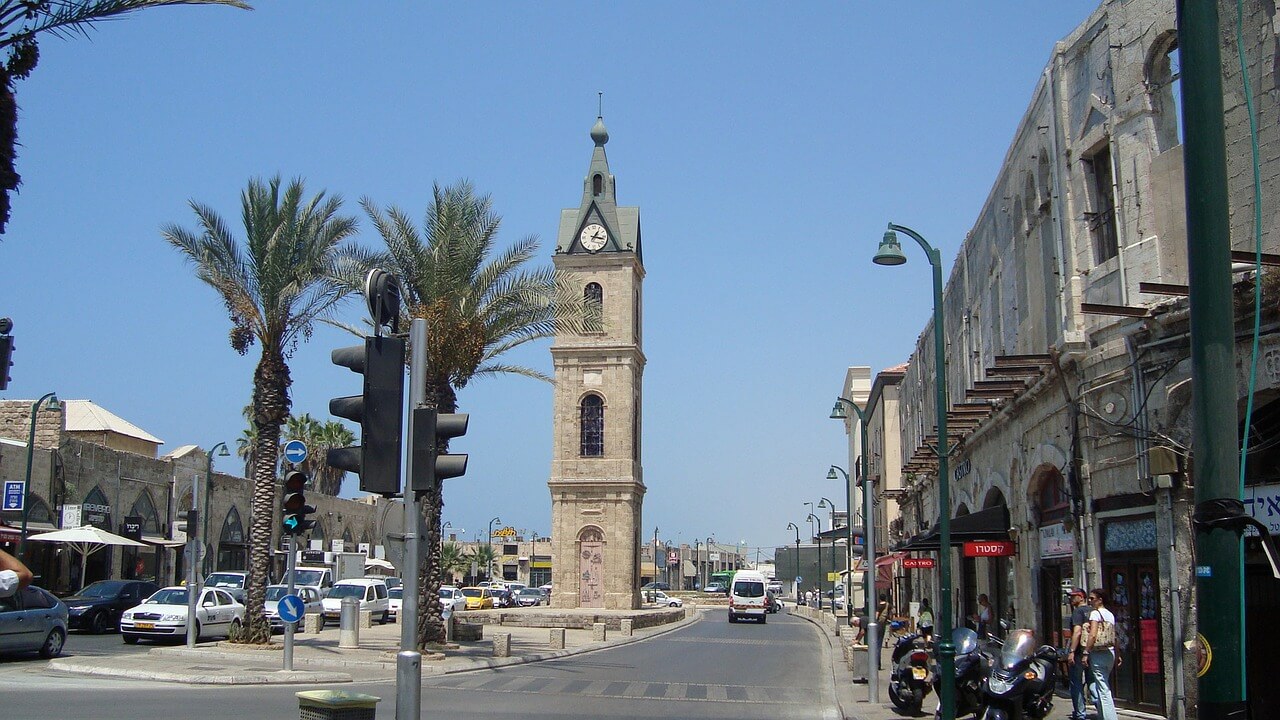
Welcome to a new era of tourism where petite hotels with unique personality and quirky furnishings have outmatched impersonal, echoey hotels. A visit to a boutique hotel gives you the rare experience to taste and feel a city in a completely different way. They are smaller, more intimate and they often reside on some of the best corners of urban cities. Tel Aviv, the high energy beach town has caught on to the boutique-trend with dozens of artistic and original hotels popping up all over town. TripExpert takes a look at some of the best on offer.
Most recently crowned ‘The Best Hotel in the Middle East’ by luxury travel magazine Conde Nast, The Norman hotel has delighted guests since it first opened its doors in 2014. Located steps away from Tel Aviv’s illustrious Rothschild Boulevard, The Norman has 50 uniquely designed rooms bursting with historical character and featuring Israeli artwork. The hotel also boasts one of the finest restaurants and bar in Tel Aviv.
Located in the heart of Tel Aviv’s hip urban scene and only a short ten minute walk from Tel Aviv’s famous beach, the Brown TLV hotel is kookily furnished with mid-century inspired furniture, vintage Playboy photography, finished/topped with some seriously impressive artwork. The Brown TLV offers 30 urban-sized bedrooms and a famous rooftop bar. The hotel also throws in complimentary bicycles to tour the city with, and free access to a nearby gym— so you can really feel like a local.
An oasis of style, the Hotel Montefiore is best known for its exquisite furnishing and eclectic Bauhaus architecture. Originally built in 1922, and restored in 2008, the Hotel Montefiore has decades of rich history that permeate from its 12 elegant rooms. The hotel also boasts a brasserie-style chef restaurant and an old-world inspired jazz bar.
The Jaffa Hotel offers a mix of old and new with its 19th century building that once housed Jaffa’s French hospital. With 120 rooms to choose from, the hotel provides some stunning views of historic Jaffa and its devastating beautiful coastline. The hotel has a new wing with more updated modern style furnishing for those looking for a more streamlined look. Inspired by New York, the Jaffa Hotel has its own Italian-American restaurant, Don Camillo.
A hotel seeped in century old history, Hotel Nordoy is one of the longest-running hotels in Tel Aviv. Built in 1925, the building is well-known for its distinctive dome-like shape, historical interiors and contemporary art. With a modest 20 rooms on offer, the hotel serves a quiet atmosphere, a rooftop lounge and a luxury spa.
Located in the uber-cool and urban South Tel Aviv neighborhood, The Poli House reflects the cities eclectic culture and design. With 40 luxurious and modern rooms, a heated rooftop pool and rooftop bar, The Poli House is the ultimate in modern-leisure. The building boasts Bauhaus architecture, and has been carefully restored by the world-renowned Egyptian interior designer Karim Rashid.
Named after its historic street, this design-inspired boutique hotel is located just minutes from the coastline, and reflects the contemporary spirit of the city. Although the hotel has been welcoming guests since its opening in 1960, the hotel remains fresh and sophisticated. With 66 elegant rooms on offer, Mendli features the very latest in Israeli art and furnishings. The Mendeli Street Hotel is well known for its famous gourmet breakfast, or you can visit Mashya, Mendli’s onsite chef-restaurant offering traditional cuisine.
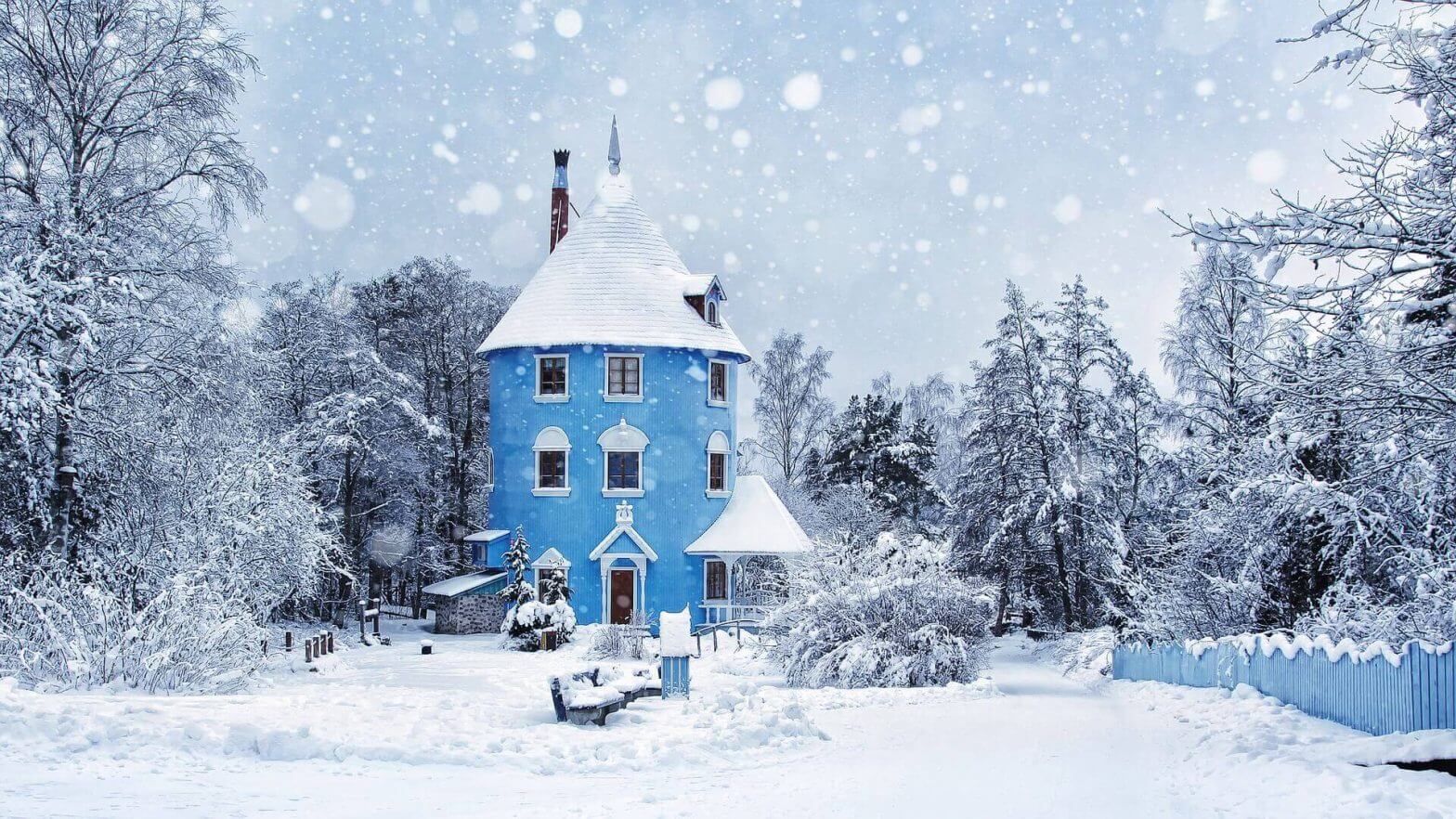
We could think of dozens of reasons why you should visit Finland, but thanks to 40 national parks; 187,888 lakes (yes, really); and the fact that you can swim, sail, fish, forage, and sleep anywhere, highlighting outdoor activities is an absolute must — especially when there’s snow involved. Sure, skiing is an obvious choice, but there are several more unique options to explore that will make you feel like a native Finn in no time. Whether you’re a thrill-seeker, sports enthusiast, or simply someone who enjoys taking in nature, rest assured you’ll find a way to amuse yourself in this unspoilt paradise.
You start your day with a cup of coffee, the Fins jump into an icy lake to get their engines running. The theory behind this activity is that after your body gets over the initial shock of being immersed in icy H20, your circulation amps up when you’re back on dry land, thus leaving you feeling refreshed and renewed. This is typically conducted after spending time in a sauna, another common Finnish recreational activity. The tradition of ice swimming (or dipping) has been around since the 17th century — if not longer — and the first “winter swimming clubs” came into existing in the ‘20s. Today, you can dare yourself to take part of this pastime at one of several fashionable bath houses, or by simply taking a dip in one of the copious lakes! Fun fact: The population of Finland is 5.4 million and there are 3.3 million saunas!
Where To Try It: Löyly, a stunning sauna on the Baltic sea in Helsinki
This sustainable, architectural gem is the brainchild of Avanto Architects. After going through several concept changes, the impressive structure as its known today was finally able to take flight after receiving funding from actor Jasper Pääkkönen. There are three different sauna experiences on offer (all heated with wood) to include a continuously heated sauna, a sauna that’s heated first thing in the morning, and a traditional smoke sauna. In between your steam session, you can relax in a fireplace room with a libation, or literally take a dip in the Baltic sea via an ice hole — aka avanto. Keep in mind that while the changing rooms and showers are gender specific, the sauna spaces are unisex. Stick around for a traditional Finnish meal at the on-site restaurant, and don’t forget to take a look at the sweeping views from the sprawling terrace where you can also sit and relax, weather permitting. Cost: A two-hour booking for the sauna costs 19 and includes a towel, seat cover as well as soap and shampoo.
Humans have been using dogs to help hunt and transport goods (including supplies during WWII) for hundreds of years. The origins of dog sledding are traced back to Greenland, Siberia, and Alaska, but today it’s become more of a recreational activity in other places around the world, to include Finland.
Where To Try It: Hetta Huskies in Lapland
The amazing thing about these safaris is that you get the opportunity to control the dogs after receiving a brief lesson by an educated guide who will lead you and your pack through the snowy wilderness. Depending on how much time you want to commit, you can opt for a shorter 6 km route (1.5 hours; 25-55 minutes of driving time), or opt for a longer 12 or 20 km route for increased time behind the reins. If you decide that you become a true mushing enthusiast, there’s always the option to book a multi-day route, complete with lodging. Cost: Starting price is €70 for a shared sleigh; €125 for a solo or guide driven sleigh.
Ice Fishing Via a Snowmobile
Ice Fishing Via a Snowmobile
As long as there have been people in Finland, there’s been ice fishing. From a historical perspective, the thousands of lakes came into the existence after the Ice Age, when glacier and rain waters filled the holes in the earth crust to the tune of two to three kilometers deep. At this juncture, fishing became essential for survival. Among the many different methods for catching fish based on water, season, and species is prehistoric lure-fishing, which literally involves fishing through a carefully crafted hole in the ice. While it still exists today, it’s received a modern-day makeover (a more user-friendly tackle) that you can try out yourself.
Where To Try It: In Rovaniemi with Lapland Adventures
This one-of-a-kind four-hour excursion starts out with a snowmobile track along the frozen River Ounasjoki where you’ll pass through snowy forests and hilly landscape. When you arrive to a small lake in the midst of the wilderness, it’s truly you, nature, and complete silence, so you’ll want to soak up every unique moment. A guide will lead you through the fishing experience, so no worry if you’re not a pro! Afterwards, you’ll be able to cook your catch over an open fire before heading back into town. Cost: 158 per person aged 15 and older.
Camping Under The Northern Lights
Camping Under The Northern Lights
Catching the Northern Lights (aka the Aurora Borealis) is amongst one of the top goals on any avid traveler’s bucket list. If you want to catch them in Finland, you’ll have the best luck September through March between 10 p.m. and 2 a.m. Tips: You are not always guaranteed to see the lights and note that Auroras can be present from anywhere from a few minutes to the entire night. Note that the colors you see and typically less pale than those you see in photographs — and speaking of which, you’ll want to bring a camera with a manual mode, a tripod, and a flashlight if you want sharp images.
Where To Try It: Aurora Bubble Sled
If you want serious bragging rights, then book an overnight excursion in a heated bubble/mini-hotel room (complete with bean bag chairs and reindeer hides) in the middle of the wilderness in Kilpisjärvi, Finland. You (and your bubble) will be transported to the final destination by snowmobile for an all-nighter. This sui generis experience is available exclusively as a part of a package through Off the Map Travel, an agency that specializes in one-of-a-kind encounters — they also offer an Aurora Floating Experience where you view the lights show while floating on your back in an undisclosed lake. Cost: Enquire within.
Reindeer Rides Via A Sleigh
Reindeer Rides Via A Sleigh
Did you know that the number of reindeers in Lapland is almost equivalent to the number of people? With that in mind, you simply cannot pass up a sleigh ride when in Finland. The history of these docile animals in Finland dates back 500 years-plus. Semi-domesticated, each deer is owned by a herder. Like their hound cousins, these animals are known for their ability to carry extremely heavy loads of goods.
Where To Try It: Lapland Welcome
Prior to experiencing your very own sleigh ride, you’ll become acquainted with the deer and their herders (via feeding and petting if desired) before cozying-up in a sleigh (complete with blankets) for an unforgettable ride on the grounds. Try your hand at reindeer lasso throwing or experience a (pre-ordered) lunch on the farm. Cost: €99 per person 15 years and under. Transfers to and from included.
Know Before You Go
- The snow season in northern Finland begins in November and lasts at least until May. In the inland regions of southern and central Finland, the first snow falls at the beginning of December and melts during late March and April.
- During January and February, there is almost always snow in northern and eastern Finland.
- The snow season in northern Finland begins in November and lasts at least until April-May. In the inland regions of southern and central Finland, the first snow falls at the beginning of December and melts during March.
- If you are planning a winter visit, dress for success. That means an insulated jacket, thermal underwear, a warm hat, thick socks, and gloves.
- Note warm clothing is included in guided safaris and other winter excursions so inquire within.

This year’s winners were chosen based on over 1.5 million professional reviews.
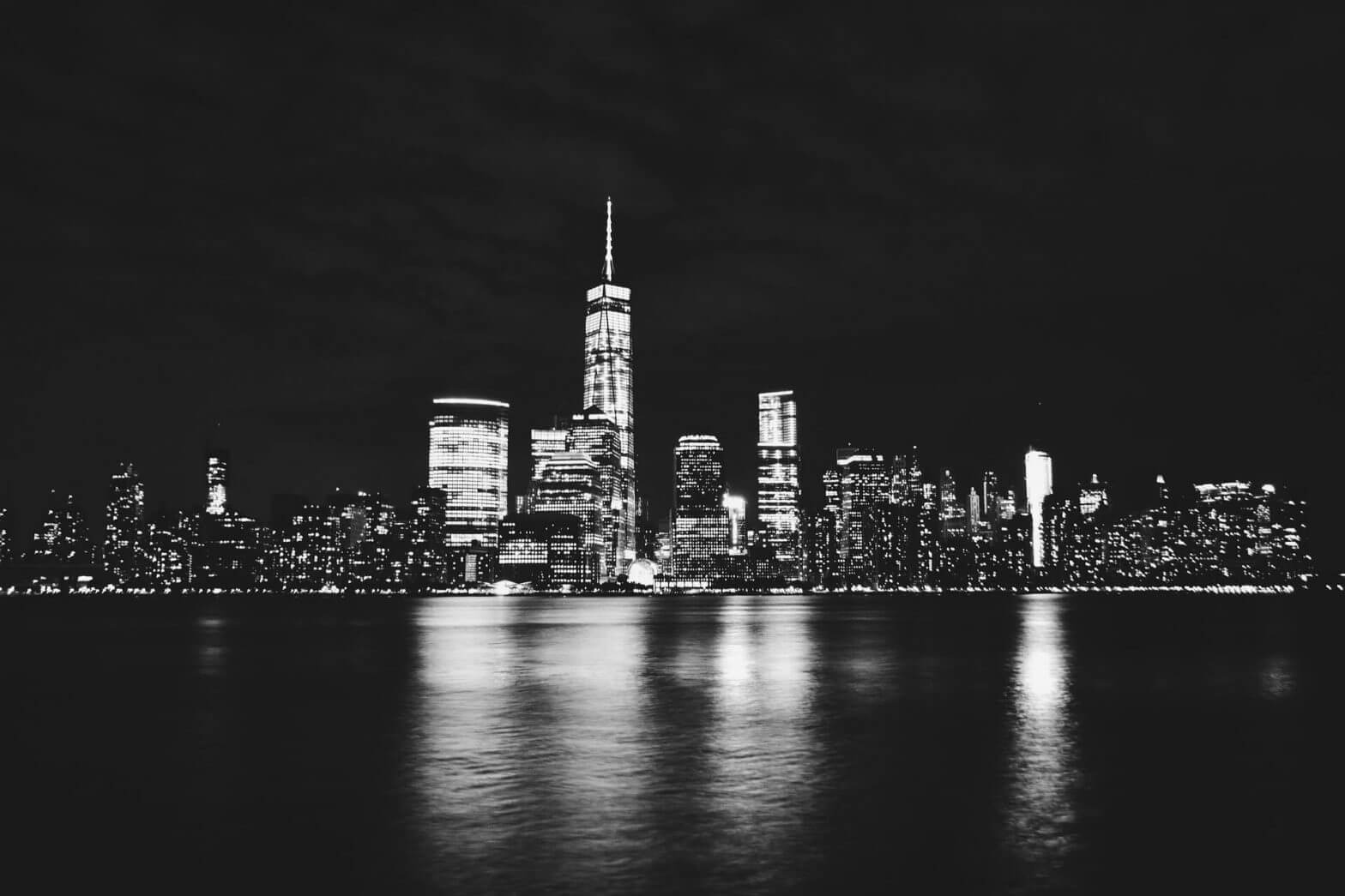
Checking into a newly-opened hotel is a lot like moving into a new home. The paint is fresh, the sheets are crisp, the bed still has a bounce, you can see your face in the pristine tiled bathroom, and the space has a true fresh aroma. But unlike one’s residence, there’s an attentive staff to take your luggage, prepare top-notch cuisine, and book those practically unattainable theater tickets. It is for these reasons — and more — that staying in a hotel is always a memorable experience. While you may have your favorites, here are some up-and-comers opening their doors in 2019. Get ready to pack your bags.
Mandarin Oriental Wangfujing
Where: Beijing
When: Early 2019
Why Go: Nestled within the commercial and political nucleus of the city, this upscale hotel is perfect for those traveling on business — but there’s plenty to draw in pleasure seekers, too. We’re talking about two restaurants, a bar, and an ethereal spa complete with a state-of-the-art fitness center and 25 meter indoor lap pool housed under a sky roof. The property is strategically located on the top two floors of the WF Central — an upscale 21,000 square meter retail paradise — so shoppers, rejoyce. Wind down at the end of the day in one of the 73 rooms and suites that are touted as some of the largest in the Beijing. Don’t leave without taking in the views of the Forbidden City on the rooftop terrace with a libation in hand.
Where: Chelsea, New York
When: February
Why Go: Following in the footsteps of the Moxy in Times Square, the Chelsea location is primed to have the same level of success. Boasting 37-stories, the hotel features 349 guest rooms (each with floor to ceiling windows), a lively trattoria/café, live/work/play spaces, a coworking lounge, meeting studios, a planted conservatory, and a retractable glass-enclosed rooftop bar with sweeping views of the Empire State Building.
Mandarin Oriental Jumeirah
Where: Dubai
When: February
Why Go: Location, location. The Mandarin Oriental Jumeira is the closest beachfront resort to Downtown Dubai and the financial and business districts, so it’s perfect for business and leisure travelers alike. The property features an impressive six dining/drinking establishments, to include a Japanese steakhouse and José Avillez of Lisbon’s Belcanto, a celebrated eatery awarded two Michelin stars. Drop your little ones off at the kids’ club and head over to the spa for one of the indigenous treatments on offer. Celebrating a special occasion? Book the the Sea Jewel, an indulgent VIP suite featuring unparalleled views of the waterfront and a hammam-style treatment area.
Where: Tennessee, USA
When: February
Why Go: It’s likely that you’re already familiar with the legendary Blackberry Farm in the foothills of the Great Smoky Mountains in Tennessee. Despite the passing of founder Sam Beall, his wife and family continue to carry the torch for this historic property, as well as up-and-comer Blackberry Mountain. The holistic retreat is situated on eight miles of protected ridgetop spanning 5,200 acres, which makes it the perfect setting to enjoy creekside meditation, cooking demos, guided hikes, craft classes, mountain biking, tree climbing, rock climbing, foraging, and camping. You’ll want to make time to wind down at the outdoor heated infinity pool featuring breathtaking views of the grounds. It’s the perfect place to come with a group as the luxury accommodations are offered in the form of a ridgetop cabin, stone cottage, or multi-bedroom home.
Where: Puerto Vallarta, Mexico
When: March
Why Go: While there’s a bevy of enormous accomodations in Mexico, Hotel Amapa proves that good things come in small packages. Several of the 55 well-appointed guest rooms feature a private balcony, scopious windows, and minimal yet modern Mexican design (think ceramics by Mexico City-based David Pompa, woven wall hangings by fibre artist Mariella Motilla, and natural bath products by Mexican brand Vervan) that makes you feel as though you’re kicking back in your own hacienda. Take a trip to the rooftop pool and bar for an eagle eye view of the Sierra Madre mountains and tropical beach scene.
Where: London, England
When: March
Why Go: LKR Hotels & Resort is is making its first European debut in the heart of London next to the historic Grosvenor Square. The 257 well-appointed guest rooms and 51 luxurious suites pay homage to the property’s roots when it served as a stately private residence. While specific restaurant details are forthcoming, we’re told one can expect internationally-renowned chefs in the kitchen, a year-round alfresco terrace, and a chic cocktail bar. If there are wedding bells in your near future, a 500 square meter ballroom can facilitate up to 700 guests for a cocktail reception.
Where: Hong Kong, China
When: March
Why Go: As this hotel is under the Rosewood brand, it’s no surprise that the accommodations are beyond luxurious — especially if you book one of the 18 specialty suites where you’ll receive personalized butler service and Manor Club access. Be sure to make an advanced booking at the Asaya, Rosewood’s second global wellness retreat. Along with face, body, and nail treatments, you can sign up for a customized, integrative program to help you achieve both physical and mental goals.
Where: Bristol, UK
When: March
Why Go: Partners in business and life, Justin Salisbury and (now) wife Charlotte are opening their fifth hotel in ten years, all of which are under the Artist Residence brand. The latest — housed in a former boot factory — will offer 27 bedrooms, a bar and café, and an event space for those who prefer a non-ballroom affair. Expect the same unconventional, nonconformist decor that includes a wide range of textures and colors.
Where: Bora Bora, French Polynesia
When: April
Why Go: Native to Mexico, the Coqui Coqui Residences and Spa portfolio is making its way to the French Polynesian island of Bora Bora. The brainchild of perfumers Nicolas Malleville and Francesca Bonato, the residences and boutique celebrate the fruits, woods, and herbs of the native land. The dynamic duo tapped their friend/neighbor Raphael Delente, an accomplished landscaper, to create a beautiful, fragrant botanical garden on the premises. The residence will blend right into the area, complete with Polynesian bungalow charm.
Where: Marinilla, Columbia
When: April
Why Go: Located within the heart of the Columbian countryside within a protected forest among the Antioquian fincas of the central Andes, Cannúa is being primed to be the only upscale boutique retreat of its kind in the entire country. The 10 rooms and 8 cabanas — constructed with sustainable materials — are nestled within the mountainside, so you really feel as though you’re one with nature despite being surrounded by modern-day amenities and locally-influenced decor. Take advantage of the terrain by taking a pre-Hispanic heritage hike, exotic bird watching expedition, or a cooking class utilizing indigenous ingredients from the area.
Where: South Africa
When: April
Why Go: Natural Selection’s latest property is situated on the former South African president FW de Klerk’s retreat — it’s likely that he choose it due to the mesmerizing views of the Indian Ocean. Case in point, Lekkerwater actually means “the place of good water,” so it’s only apt that each of the seven rooms are located on a six-kilometer private beach. The De Hoop Nature Reserve is one of the most beautiful coastal reserves in Africa, so it’s a good home base for spying freely roaming Cape Mountain zebras, thousands of endemic plant species, tidal pools, and whales from July to November — come August or September and you could very well catch 400 to 600 whales at once!
Where: London, UK
When: Early Spring
Why Go: Whether it’s celebrating the Golden Age of travel on the Venice Simplon Orient-Express or rubbing elbows with A-listers at Cipriani and Copacabana Palace, the Belmond group is the epitome of luxury. The latest venture to join their portfolio is housed within the former home of Lillie Langtry, mistress of the Prince of Wales (later Edward VII.) Later, when the residence became the Cadogan Hotel, it was the hideout of Oscar Wilde — though he was eventually arrested in room 118. Now, after a four-year overhaul, the property is primed to be one of the most luxurious in all of London. The rooms and suites still have the vibe of an opulent old home, but with modern-day decor and amenities. The property is perfectly positioned between Chelsea and Knightsbridge, so you’ll have plenty to see and do. Just don’t miss out on the on-site gems such as the stunning Cadogan Place Gardens (the same since 1886) and the Chelsea Physic Garden (1673), London’s oldest botanical garden. The hotel will provide blankets, deck chairs, board games, a picnic, a hands-on learning experience, or anything else to help you enjoy this impeccible outdoor Eden.
Where: Paris
When: May
Why Go: Those booking a springtime getaway to the City of Light are going to want to be one of the first to stay at what’s bound to be one of the newest Parisian hotspots — but with only 30 well-appointed rooms, you’ve got to act fast. Housed in the former European Consulate in the heart of Saint-Germain-des-Prés, the location literally took the hotel group five years to find. J.K.’s first non-Italian venture will still celebrate their roots (hint: Casa Tua restaurant) while pulling in enough French touches so you remember where you’re at. For example, amongst the custom made interiors by Michele Bonan, you’ll find one-of-a-kind items from flea markets across Paris. It wouldn’t be a luxurious French hotel without a spa (Sisley, in this case), and the indoor pool can serve as a mood-booster on those grey Paris days.
Where: Menorca
When: June
Why Go: Childhood friends, the dynamic French trio (Oliver Bon, Pierre-Charles Cros, and Romée De Goriainoff — aka Experimental Group), are behind some of the most sought-after restaurants, drinking establishments, and hotels in Paris, London, New York, Verbier, and Ibiza — but now they’ve got Menorca on the brain. Unlike other islands, Menorca (a UNESCO Biosphere zone) is relatively unspoilt in comparison to its other sandy sisters, which is one of the many reasons why you should go. The 40-acre hotel — and first resort property for the Experimental Group —was previously a finca (country estate/ranch), yet it boasts a similar vibe to its extremely popular beach club in Ibiza. Of the 40 rooms, 9 will include private dipping pools for those quiet moments when you’re not catching the sunset with a craft cocktail (of course) at the beach bar.
Where: Rwanda
When: August
Why Go: What started as one lodge in 1993 has now morphed into 12 lodges and camps amongst five wilderness regions in three African countries. The family land (known as the Sabi Sand Game Reserve) is also home to copious community development projects, so it’s making the lives of those who live there better, as well as those who visit. Another reason that makes Singita Kwitonda Lodge unparalleled to none is that it rests on 178 acres of land on the edge of a national park — more than one-third of world’s remaining mountain gorillas reside here amongst the treetops (you’ll want to book a classic safari!). From traditional dry-stone walls built by locals to native planting, the six lodges and camps are designed with the environment and community in mind.
Where: Chaina, Crete
When: Summer
Why Go: Did you know that Thomas Cook, the vacation package guru, was also an esteemed hotelier? That’s right, The company has properties in Mykonos, Kos, and Rhodes, but now it’s set to open up a more family friendly establishment in the ancient city of Chaina on the island of Crete. While the parents reclaim their sanity with yoga or a massage, the kiddos can explore the Neverland-inspired treehouse or partake of an educational yet entertaining cooking class, painting workshop, or sleepover experience — in a teepee no less! The newly built village-like property boasts 106 rooms and suites (as well as 16 family villas and 4 presidential villas) feel like a home away from home, Cretian style.
Where: Venice
When: September
Why Go: First there will be Menorca (see the aforementioned notes on Experimental Menorca), next there will be Venice, the hospitality group’s first Italian property. Upon visiting the area, the group became enamoured with a 17th century palazzo in the Dorsoduro district, an area that boasts more of a residential (read: less touristy) vibe. Nestled between two unassuming canals, the front of the 39-room hotel boasts a sweeping terrace that serves as the main restaurant and Experimental bar. The back of the property — accessible via a private garden — offers a private space where one can take breakfast or an afternoon libation. Thankfully, designer Dorothée Meilizchon retained many of the historic elements that make Venetian architecture within the property, yet you’ll see contemporary nods to remind you that it’s 2019.
Margaritaville Nashville Hotel
Where: Nashville, Tennessee
When: Fall
Why Go: Nashville is the first urban retreat where you can waste away in Margaritaville. The 217-room hotel will feature all the amenities of a beachy resort, to include a rooftop relaxation and entertainment area, swimming pool, cabanas, and live entertainment when you’re not at Music City Center. For those in the timeshare arena, 52 Margaritaville Vacation Club by Wyndham timeshare condo suites are on offer.
Where: Sarasota, Florida
When: December, 11
Why Go: Celebrating European design and 40’s modernism, this luxury 89-room luxury boutique hotel (and as the name suggests, it’s modern-chic) is a welcome addition to the urban Rosemary District. When you’re not in the mood for the crowded beach, take a dip in one of the two aqua pools (or the hot tub), complete with private cabanas. If business trumps pleasure, there’s 10,000 square feet of meeting space and Rudolph’s restaurant (an elegant 2,500 square-foot eatery) to impress colleagues and contacts alike.
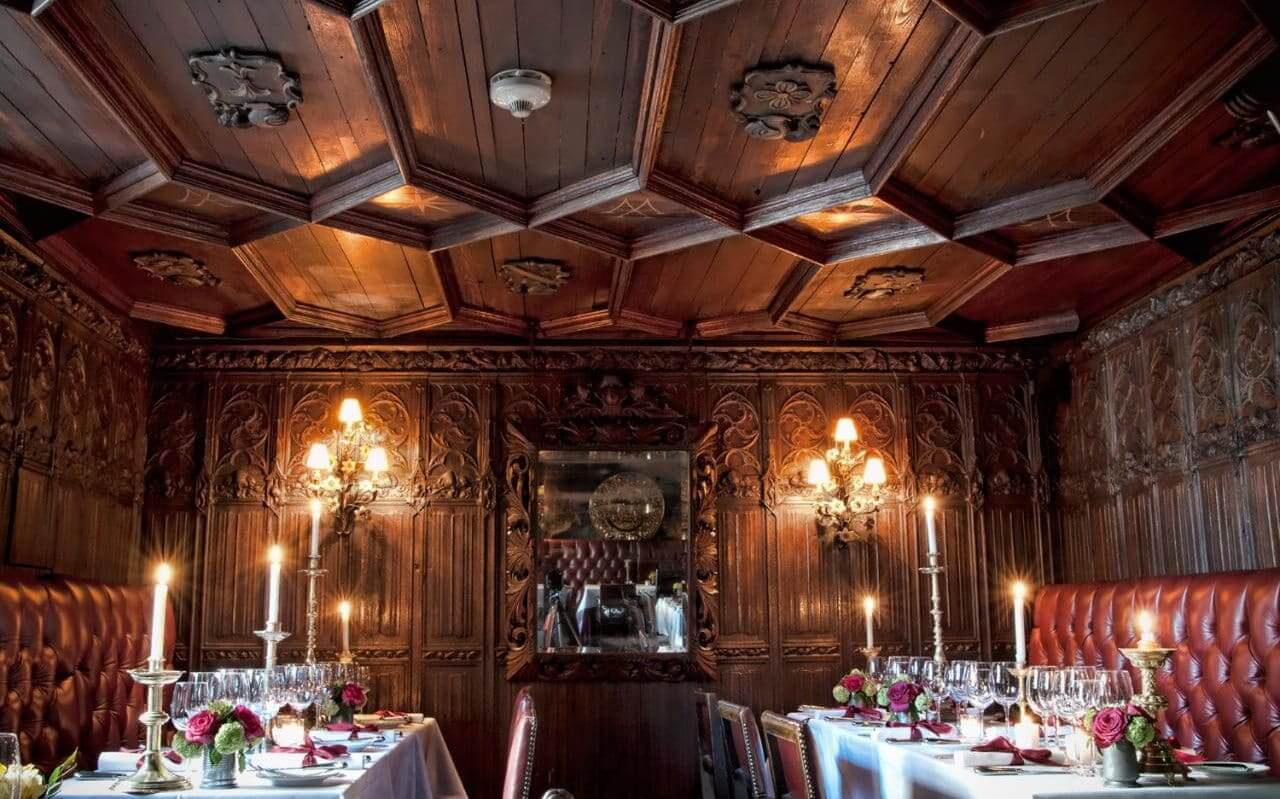
From abbeys and castles to ancient drinking holes, Edinburgh packs a lot of history into its square miles. So it’s no surprise that the city offers visitors the chance to stay in places where the past feels very much alive and tradition takes centre stage. In an age where the more Instagrammable a hotel, the better, the extravagant facades, period interiors, dark wood panelling and chandeliers of Edinburgh’s historic hotels make them an especially seductive getaway.
Our Experts’ Choice winners have all scored over 80 on TripExpert, representing the very best of the Scottish capital, according to expert sources. So check out our list of the top historic hotels in Edinburgh, for old-school charm combined with modern-day comfort, and for character without skimping on quality.
Located at the east end of Princes Street, Edinburgh’s main thoroughfare, this top-end Edwardian hotel – with its iconic clock tower – is a true city landmark. A hotel of peerless class and quality whose motto “Nemo me impune lacessit”, or “no-one attacks me with impunity” would seem arrogant were it to come from any other hotel. From its lobby with its chandeliers, and towering columns to the 18th-century-style bedroomswith their marble bathrooms and castle views, Balmoral offers guests the luxury and elegance of a bygone era. Enjoy a dram in the whisky bar, boasting one of the largest selections in the world, or afternoon tea in the Palm Court where you might also participate in an etiquette class. But while it might be well-established, Balmoral far from stuck from in its ways. Ever keen to expand its offerings, as of November 2018, the hotel is offering personalised walking tours in partnership with Hunter, which guests can enjoy while wearing a pair of the classic wellington boot.
If it’s historic grandeur and unapologetic decadence you’re after, the Prestonfield is the place for you. Concierge sums it up nicely: “As far from minimal as you can possibly imagine, this restored Jacobean mansion is extravagantly rococo.” We’re talking bathrooms decked in Venetian glass mosaics, rooms overflowing with antiques, original tapestries, hand-painted wallpaper, and tassels and gilt galore. A mansion dating from 1687, its one-time owner Sir Alexander Dick can be thanked for introducing the rhubarb to Scotland in the 18th century – hence the name of the hotel’s restaurant. Today, the Prestonfield offers both an escape into an aristocratic past and a bolthole from the chaotic city-centre thanks to its 20-acre grounds complete with peacocks and Highland cattle. Fun fact for history buffs: Benjamin Franklin stayed here and was so taken with it he wrote a poem where he notes its “Neatness and sweetness all around”.
Waldorf Astoria Edinburgh – The Caledonian
This famous railway hotel is somewhat of a city relic, sitting at the west end of Princes Street and referred to affectionately by locals as “the Caley”. Taken over by Waldorf-Astoria in 2012, it was transformed from a slightly worn-down grande dame into something spectacular. And in the last year, it has been bought by Twenty14 Holdings, who plan to add a further 50 rooms to the hotel. Built between 1898 and 1902, today it features two exceptional restaurants – traditional French haute cuisine at Pompadour by Galvin, classic bistro fare at Galvin Brasserie de Luxe – and plenty of red sandstone, restored marble, and rooms in smokey blues and greys. Of particular note for history fans is the show-stopping Peacock Alley, formerly the train station concourse, as well as The Carriage Queen rooms, with fixings that recall Victorian railway carriages. You can also delight in knowing that previous guests have included the likes of Charlie Chaplin, Elizabeth Taylor and Bing Crosby.
This elegant fin de siècle building was formerly the headquarters of the ground-breaking national newspaper of the same name. Today The Scotsman is a luxury hotel but much of its allure lies in imagining the controversial headlines composed within its walls. Of equal charm is its magnificent sandstone façade and fairytale-esque towers. As Time Out puts it, there’s “No better place in Edinburgh to have a bath in a turret.” And its interior is also gorgeous: dark oak panelling, stained glass, columns, and a green-and-white marble staircase. Set over 9 floors, the hotel is a labyrinth that will lead you back to a time when its rooms were used as offices and its Penthouse Suite the pigeon loft. Top tip from Fodor’s: ask for an upper-story room with a view, both for peace and quiet and a visual treat. Rooms each include a Edinburgh Monopoly board game and a free daily copy of the Scotsman.
The Witchery by the Castle
For a heady hit of Gothic glamour, it doesn’t get better than The Witchery by the Castle. Nestled away beneath the castle in a merchant’s house dating from 1595, this is a portal directly back to the 16th century. Think oak-panels, low ceilings, wall hangings, red leather, and lots of candle-light. The suites have names such as The Turrent and The Inner Sanctum and are all as bewitchingly old-fashioned as you might hope: ornate four-poster beds, velvet, brocade, bathtubs designed for two, and here and there a suit of armour. Yes, it’s flamboyant and theatrical but everyone needs a break from the 21st century sometimes. Unfortunately this unique hideaway is no longer a secret. As Lonely Planet points out, you’ll have to book several months in advance to be sure of getting a room.
The Malmaison, set in a former Seamen’s Mission in Leith, is a historic building with a firmly contemporary interior. Located in the docklands area right on the seafront, this hotel is ideal if you’re craving broodingly beautiful views over the water. A majestic 19th-century building that used to be part of the Christian welfare charity, Missions to Seamen, it could house up to 56 sailors at a time – more, if there was a shipwreck. It was also a ‘house of ill-repute’ at one time – or at least legend has it. Today, however, it’s a design hotel, and part of the on-going gentrification of this part of the city as it transforms into a sophisticated and elegant waterfront hub. Here you’ll be close to many of Edinburgh’s culinary hotspots, including The Kitchin and Martin Wishart, both Michelin-starred and within walking distance of the Malmaison.
Part of the Du Vin chain, which has built its name on the refurbishing of unusual buildings, this hotel is as characterful as they come. Situated in a former Victorian poorhouse, which then became an asylum, this 47-room hotel is steeped in intriguing history. While the furnishings might be understated – with the occasional smattering of tartan – you can be sure the building’s past was far from uneventful, and there are some rather dark reminders of its former incarnation in the walls around the hotel. Nevertheless, the main emphasis of the hotel is on wine, with rooms named after different wines and champagnes, monthly wine-tasting sessions and a wine glass chandelier in the reception. Meanwhile, at the heart of the hotel is a bistro serving traditional Scottish fare and an overhanging mezzanine bar. Or, if you want to head out, the hotel is surrounded by great pubs and restaurants as well as many popular city attractions.

Once the main port connecting France to its North African possessions, Marseille has long been a melting pot of cultures. The days of colonial rule have come and gone, but the city remains as vibrant and multicultural as ever. These 5 attractions represent the very best of old and new Marseille, based on recent reviews in major travel guides, magazines, and other respected publications.
Basilique Notre-Dame de la Garde
Perched on the highest natural point in Marseille, the Neo-Byzantine church of Notre-Dame de la Garde numbers among the most prominent and important landmarks in the city. This mid-19th century church is dedicated to the Virgin Mary, the protectress of sailors and fisherman, and of the entire city. The vaulted crypt features an elegant statue of the Virgin supporting the Christ Child with one hand and proffering a bouquet of flowers with the other. The upper sanctuary is covered with soaring domes decorated with glittering mosaics. Don’t miss the bell tower, which offers panoramic views of the city!
Flanked by the Panier (Old Town) on one side and Notre-Dame de la Garde on the other, the picturesque Old Port served as the commercial center of Marseille for over two millennia. The main commercial docks have since been moved, but the port remains a thriving harbor for fishing and pleasure boats alike. Visit the artisanal shops selling Marseille soap, sample locally-made pastis, or simply watch the world go by at the many restaurants, cafés, and bars lining the basin. Early birds can enjoy the vast array of fish on offer at the local fish market.
Devoted to the great civilizations of the Mediterranean, this new museum occupies three distinct buildings: the historic Fort Saint-Jean, the ultra-modern J4, and the Center for Conservation and Resources, which is located in the Belle de Mai area of the city, away from the other two sites. On offer are major exhibitions, public lectures, and films, as well as a pleasant café with unrivaled views of the sea.
The abbey of Saint-Victor is one of the oldest monuments in Marseille. Dating primarily to the 12th century, the fortified complex reportedly marks the burial site of Victor of Marseille, a Roman soldier martyred in late antiquity for denouncing idolatry. The massive stone structure houses the relics of Victor, as well as those of other local saints. Of particularly note is the collection of Paleochristian sarcophagi in the crypt and the ornate 17th-century organ in the upper church.
Located less than a mile offshore in the Bay of Marseille, the brooding Château d’If is just a 20-minute ferry ride from the Old Port. This former prison and walled fortress was once home to France’s most reviled criminals, including enemies of the state and religious offenders. It rose to fame in the mid-19th century, when Alexandre Dumas published his renowned novel, The Count of Monte Cristo. The fort preserves the fictional count’s prison cell to this day.
Just another WordPress site
